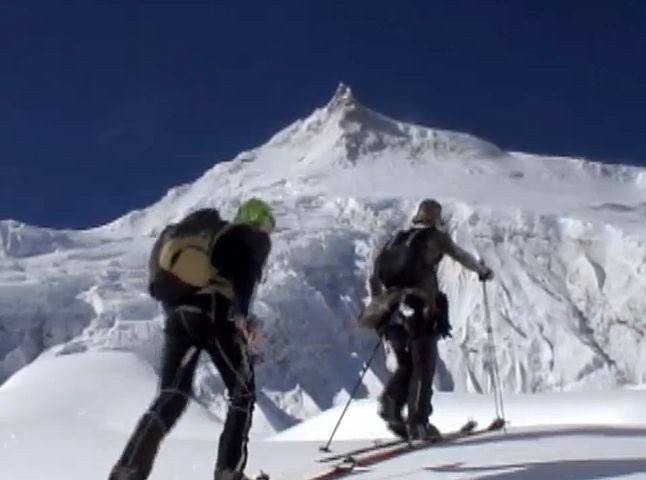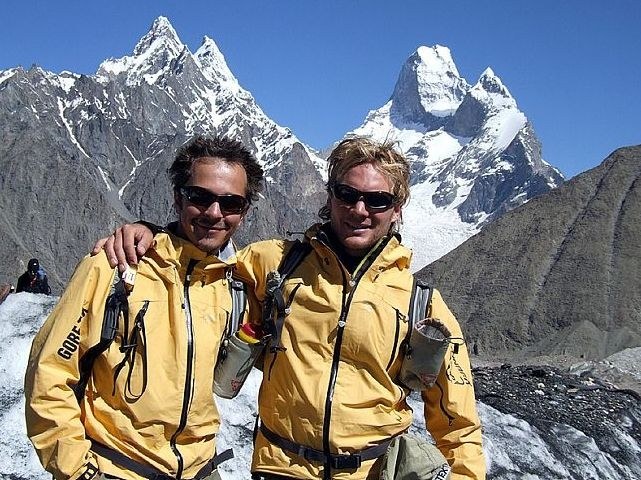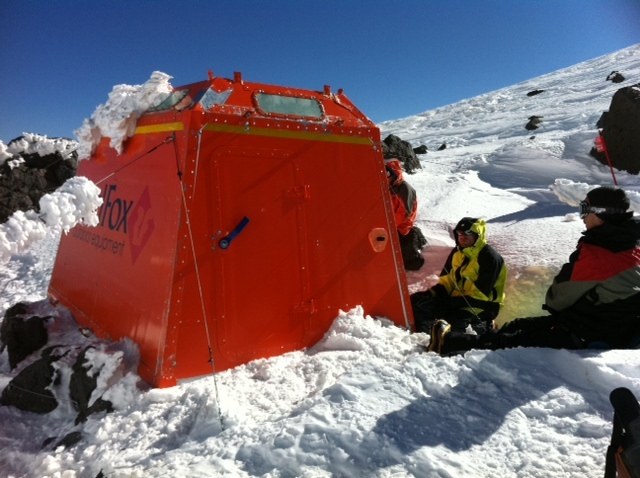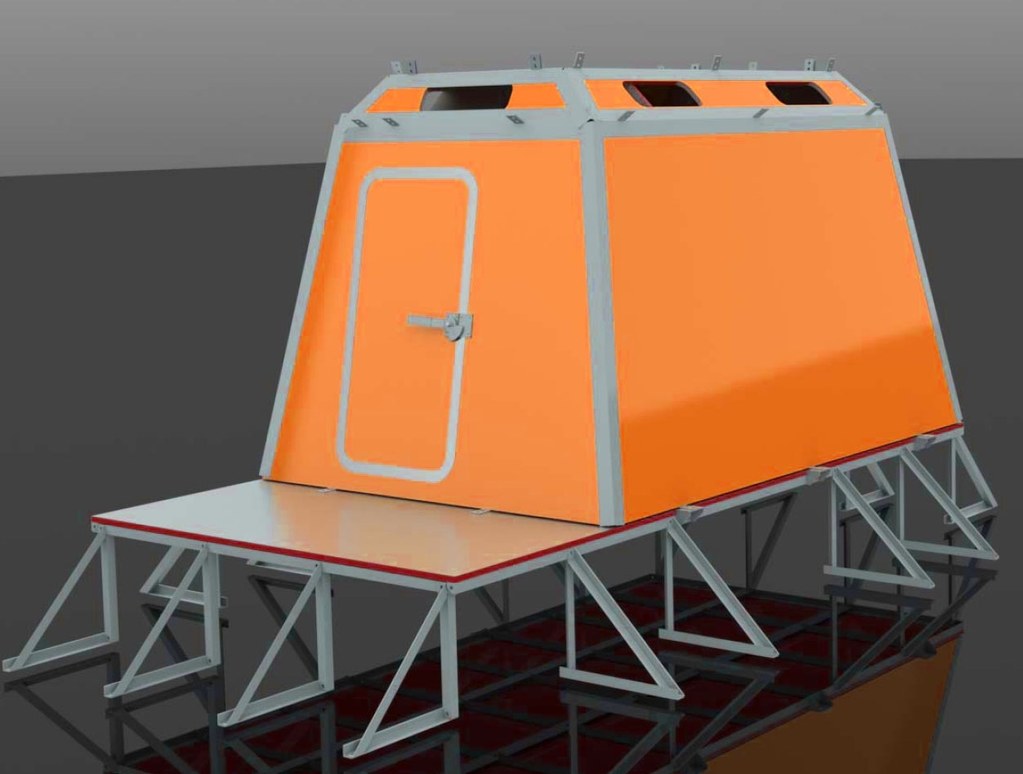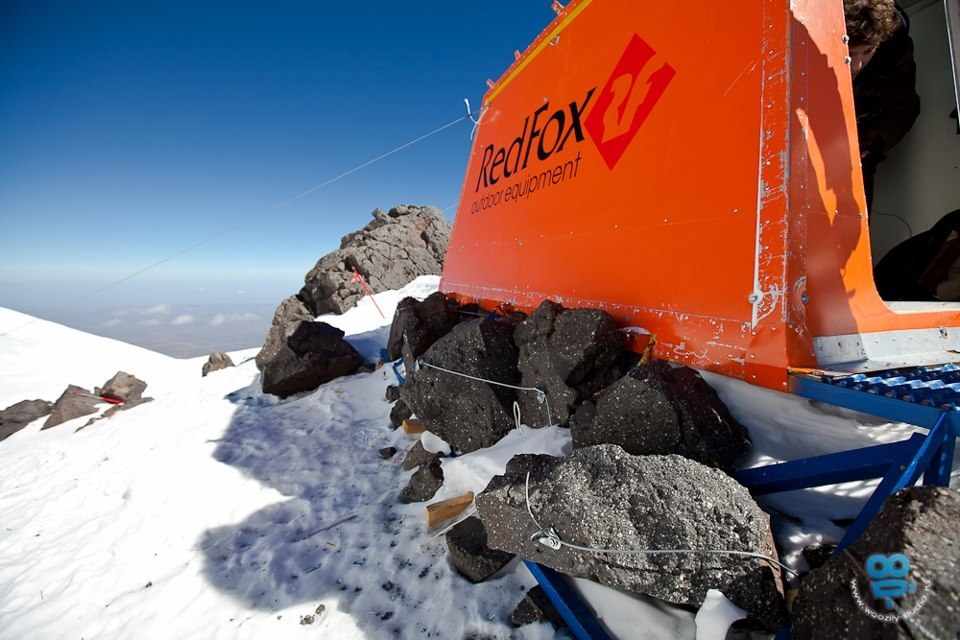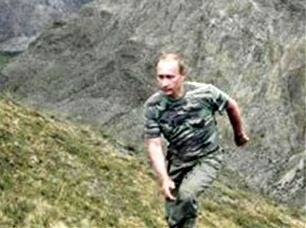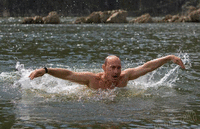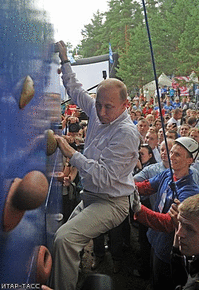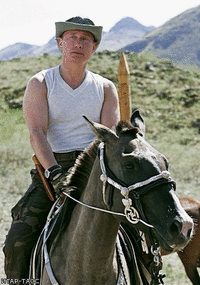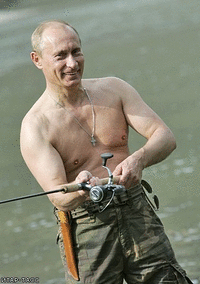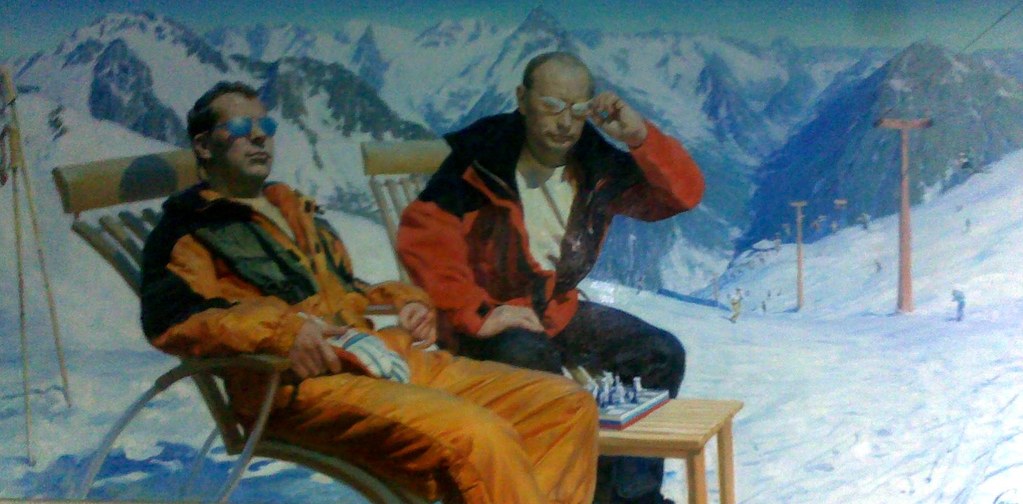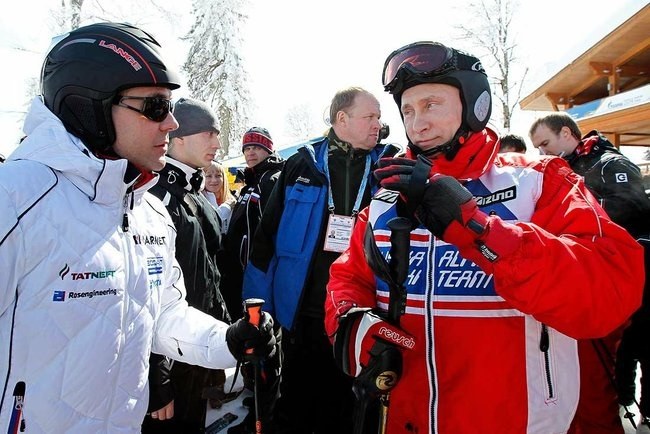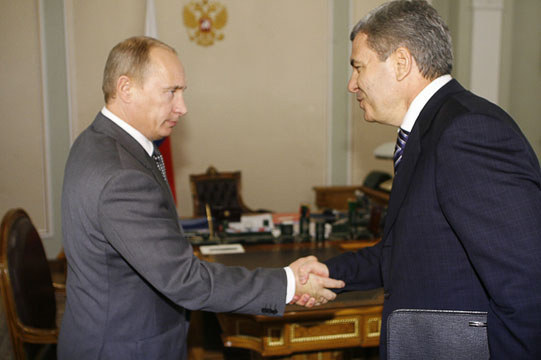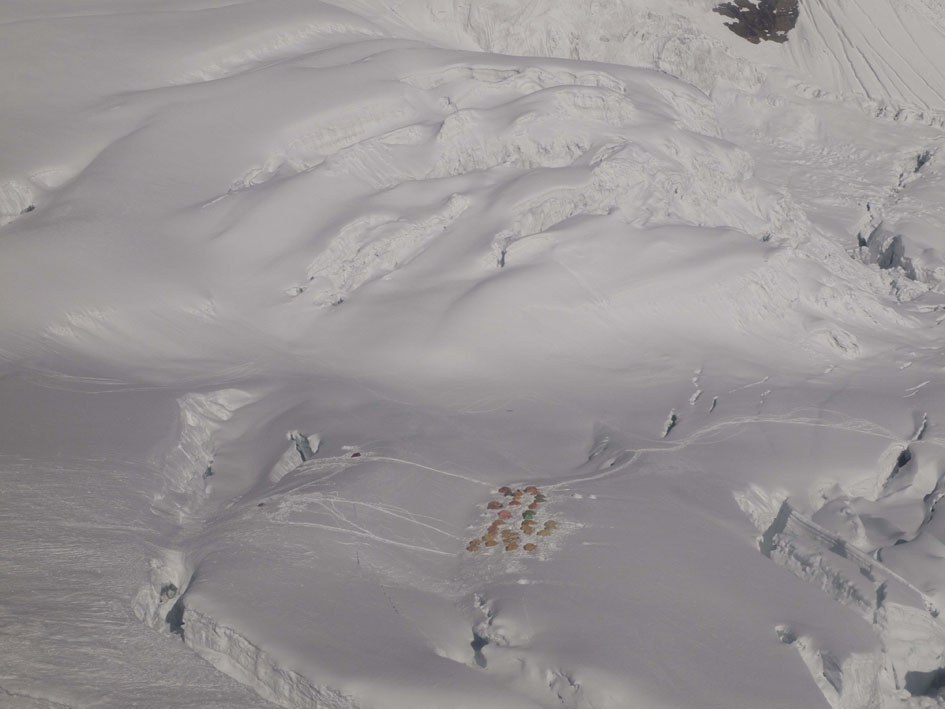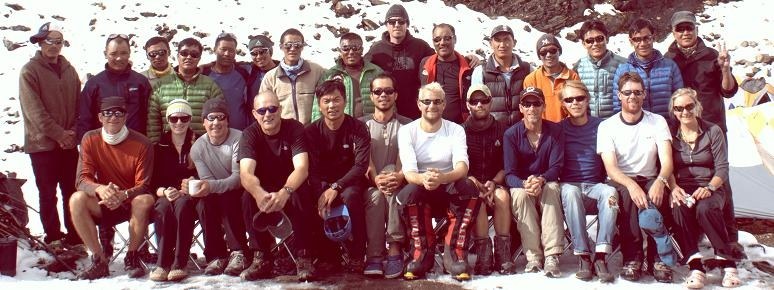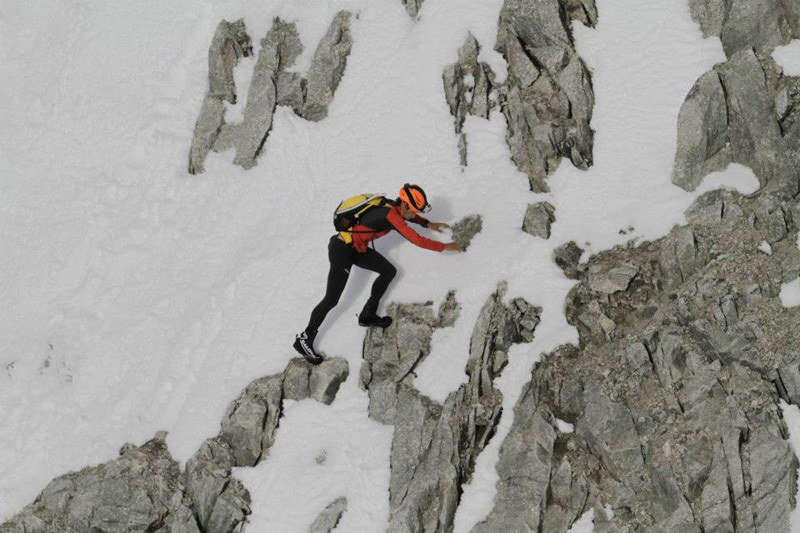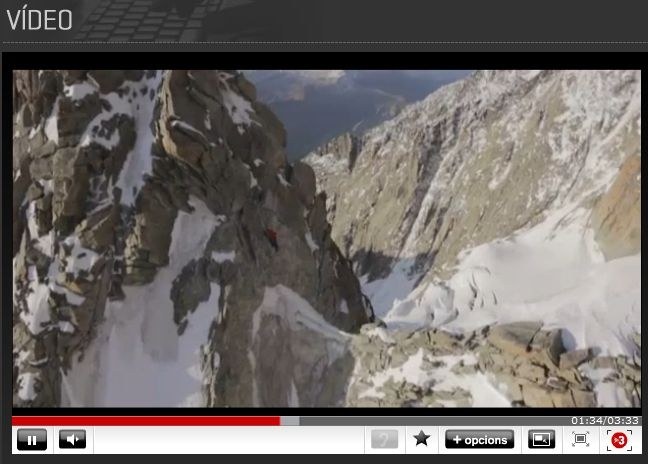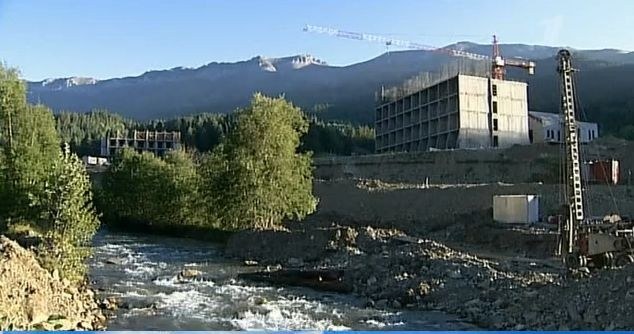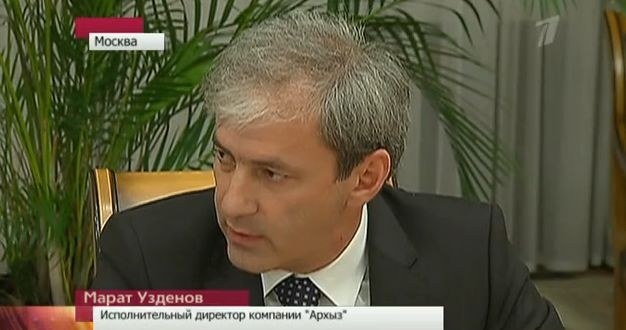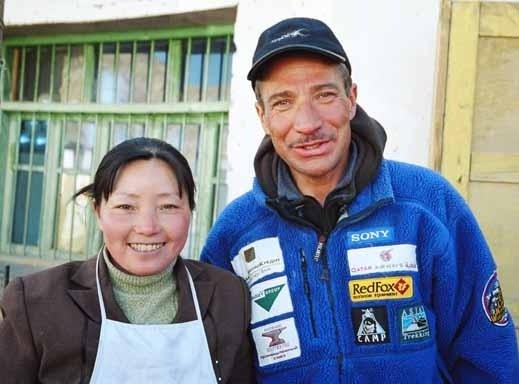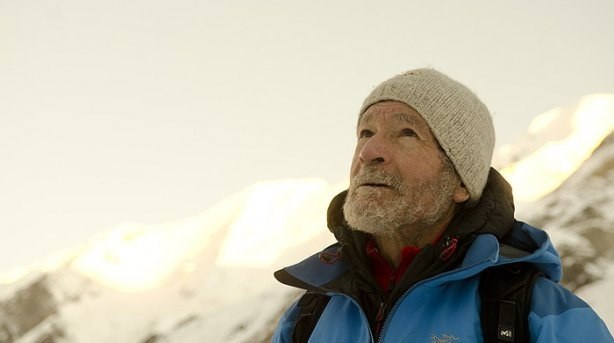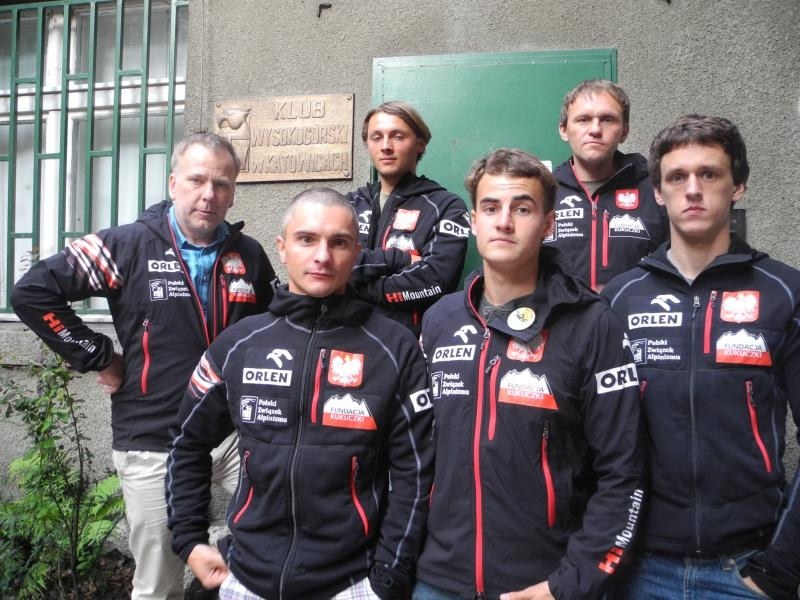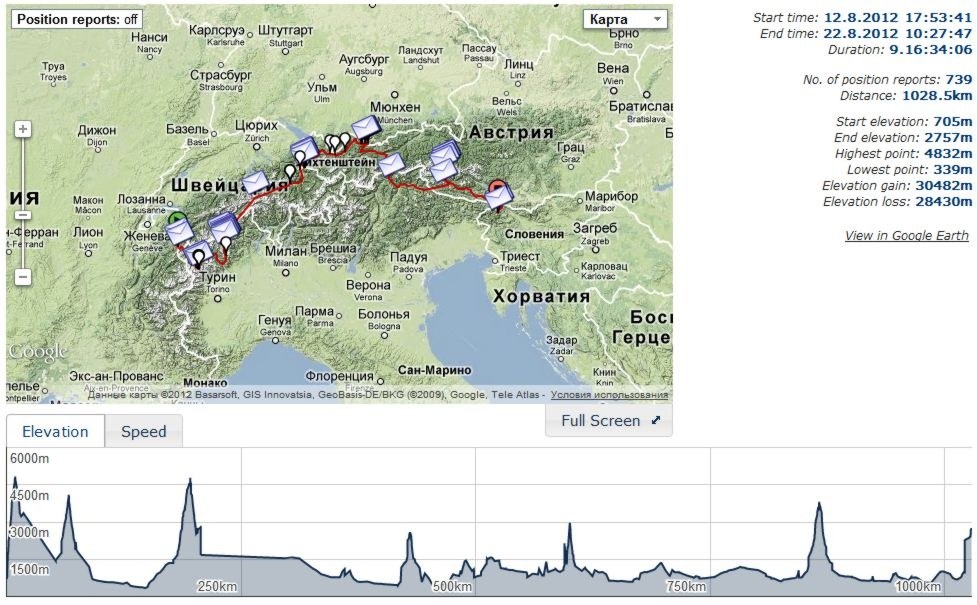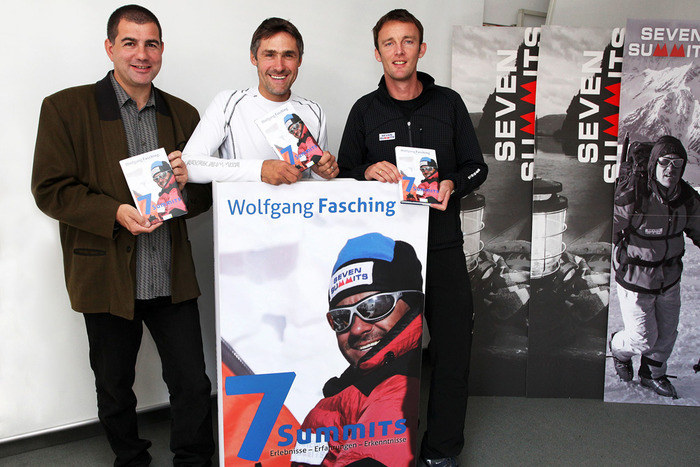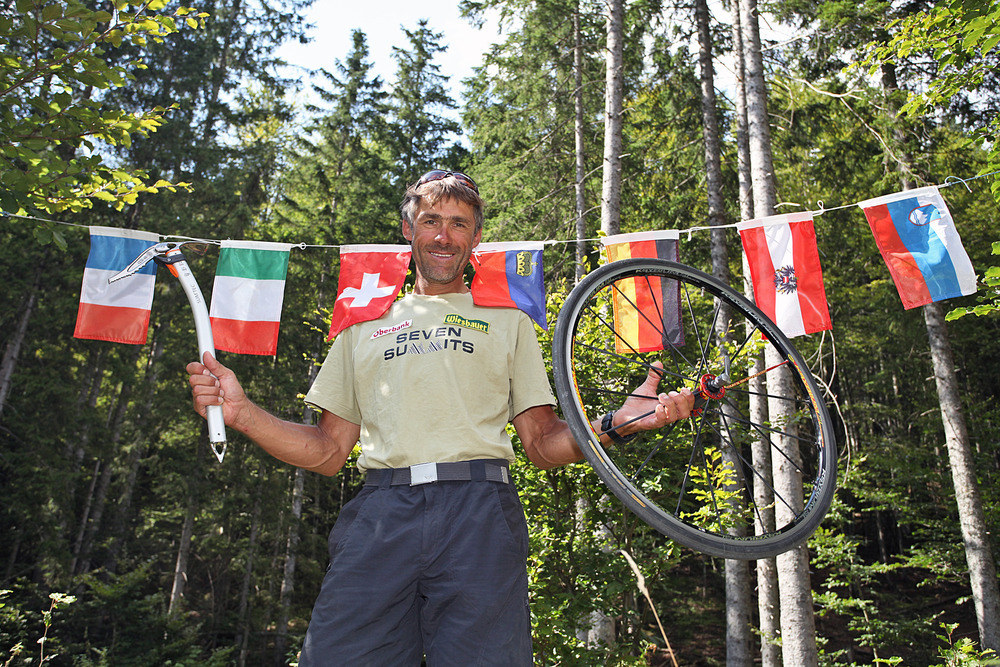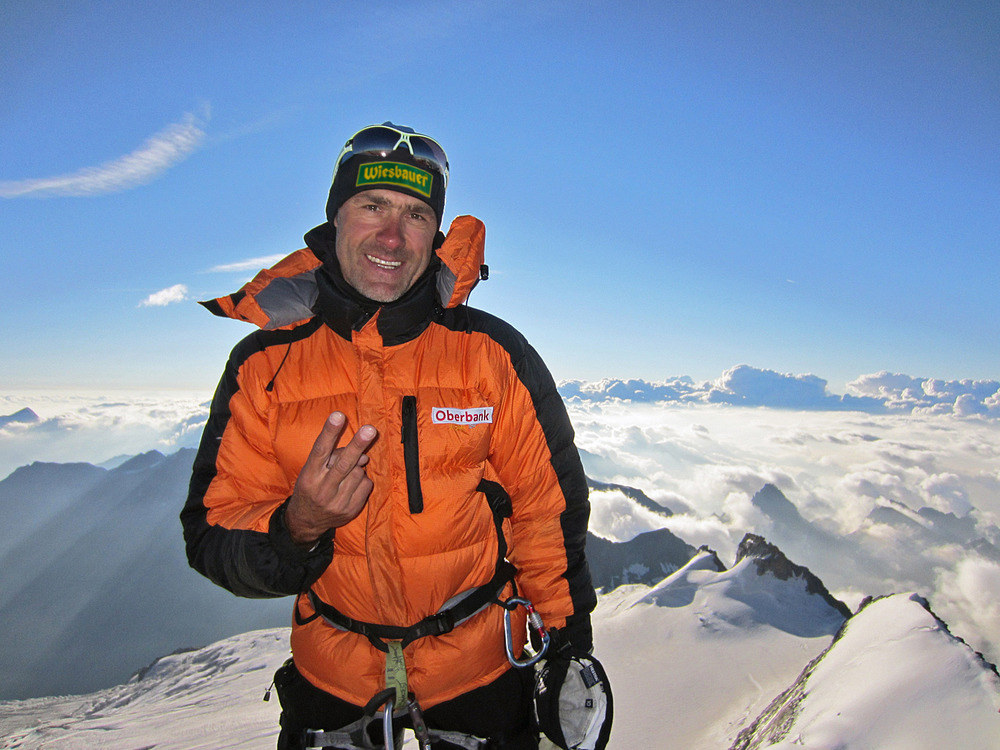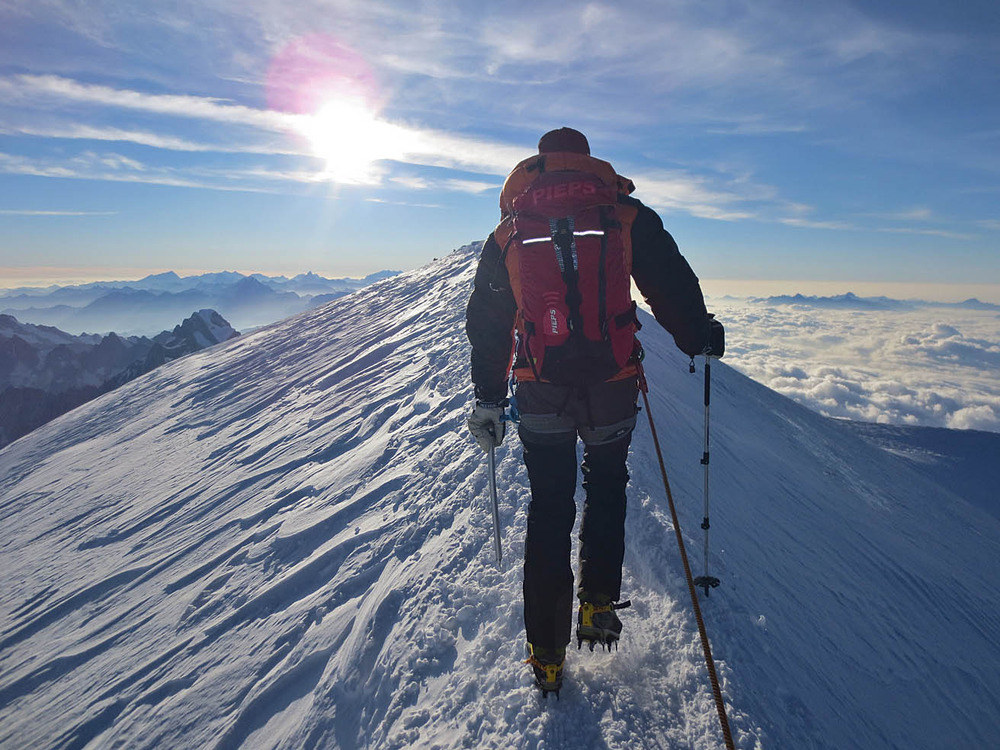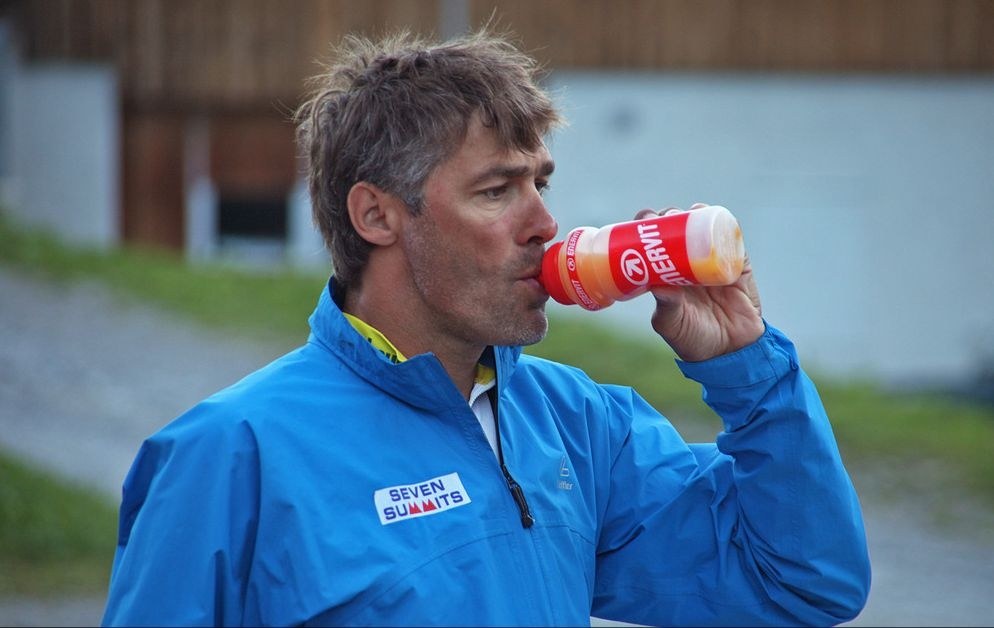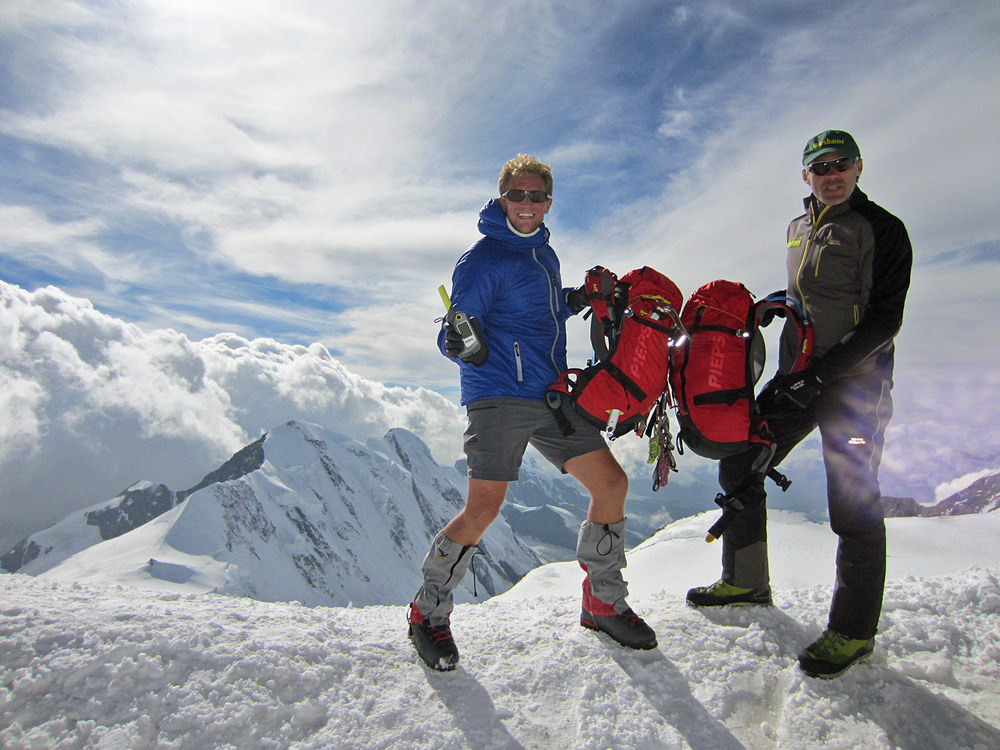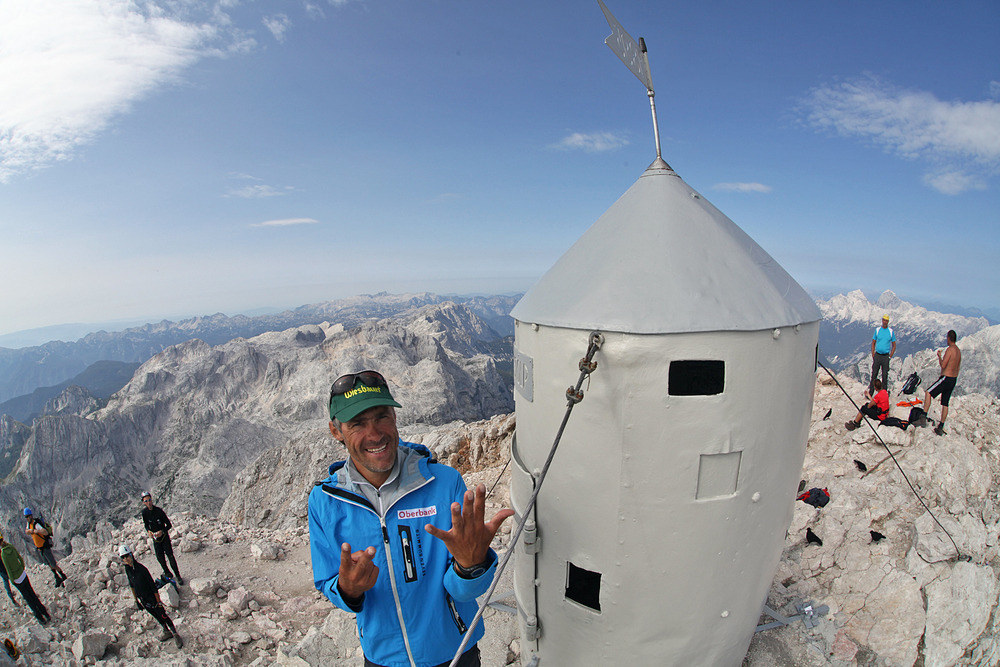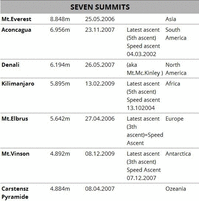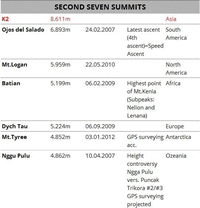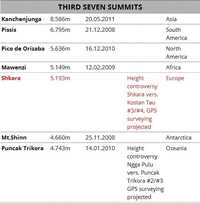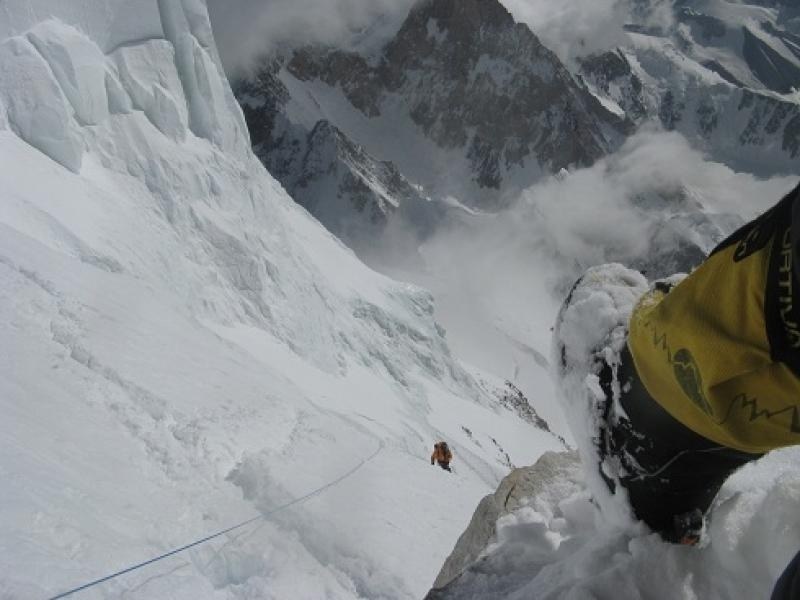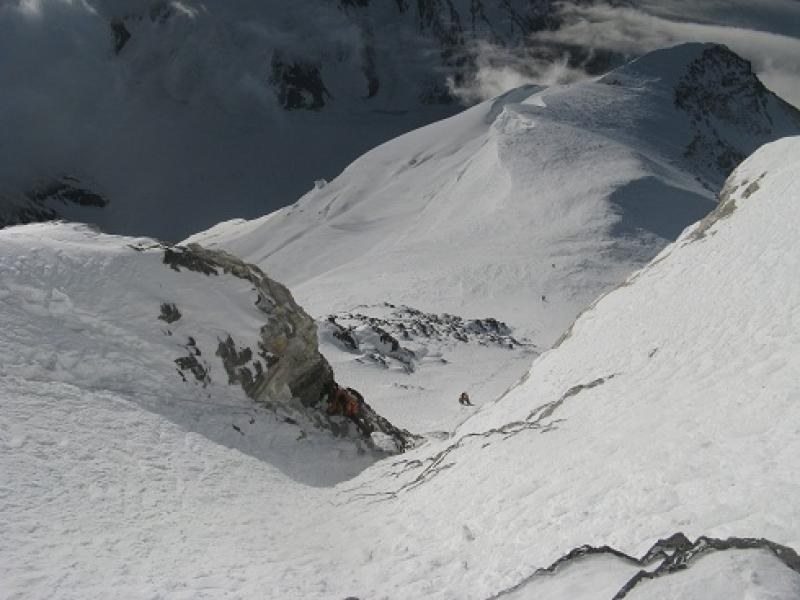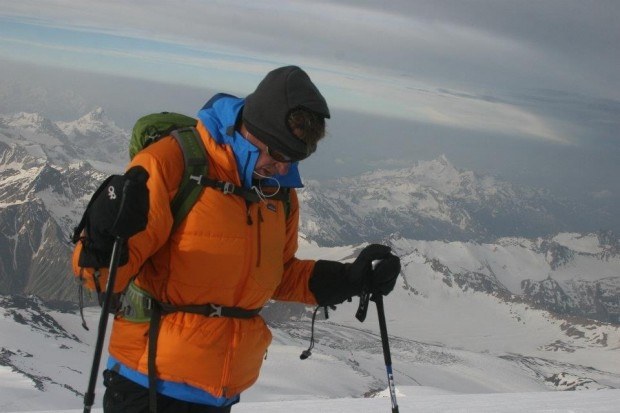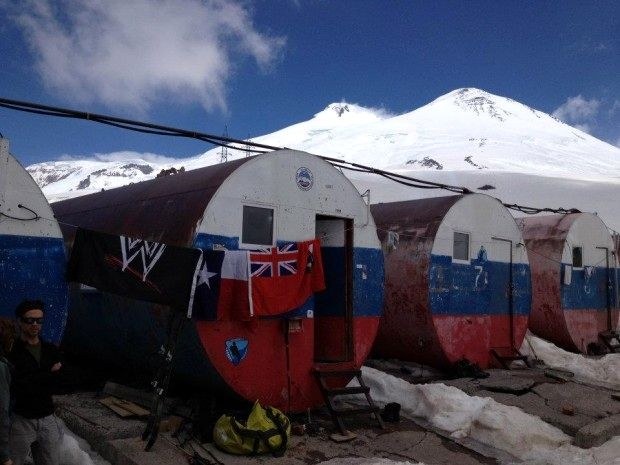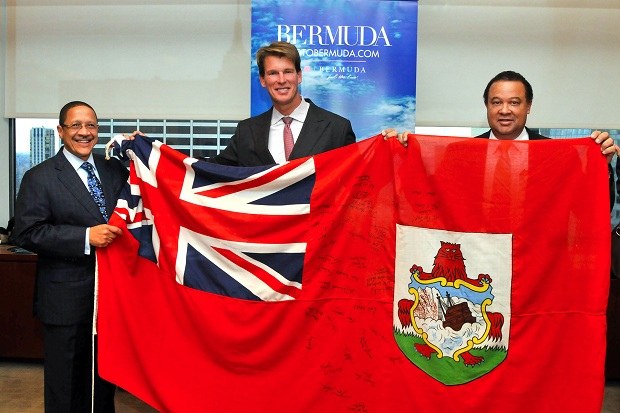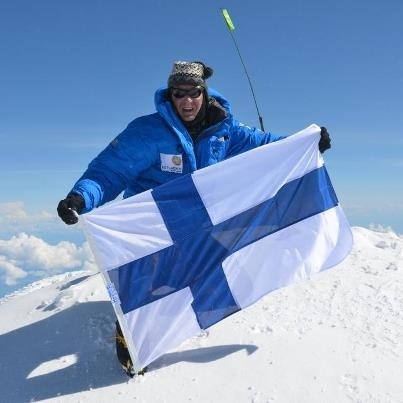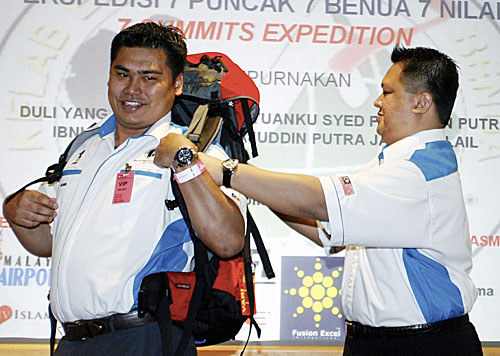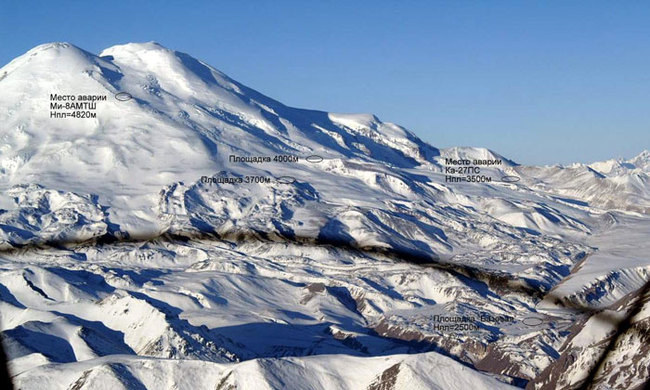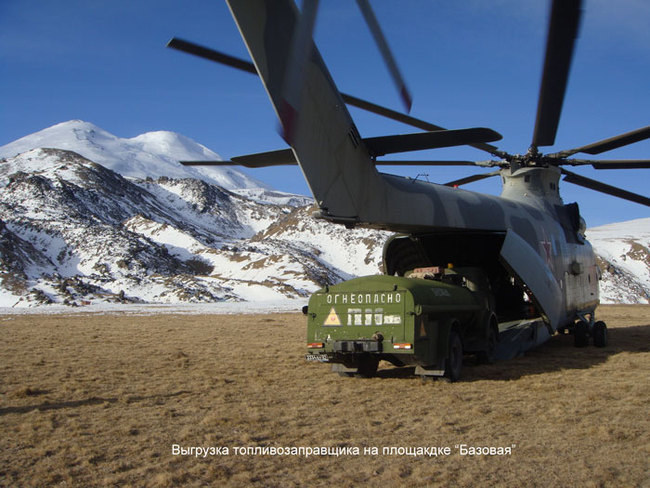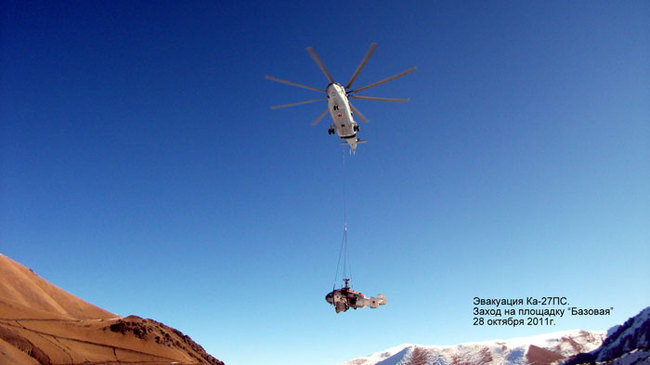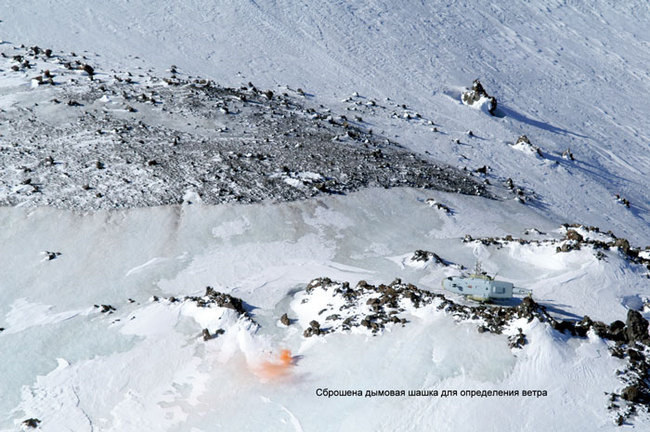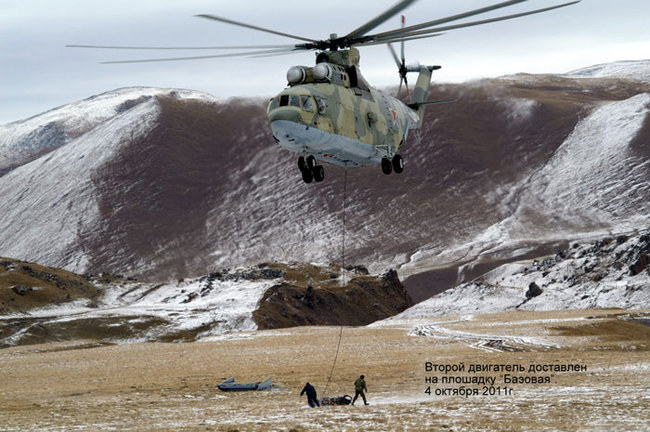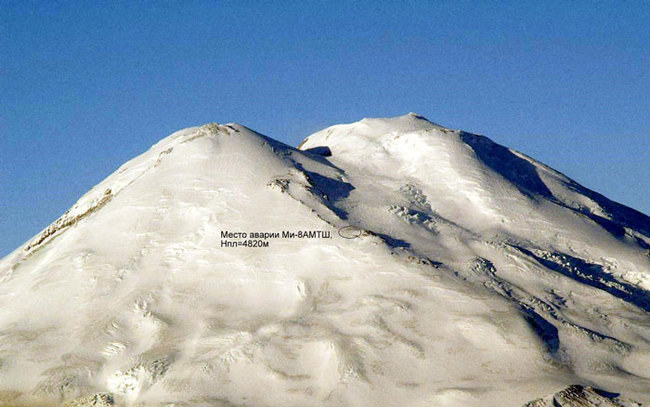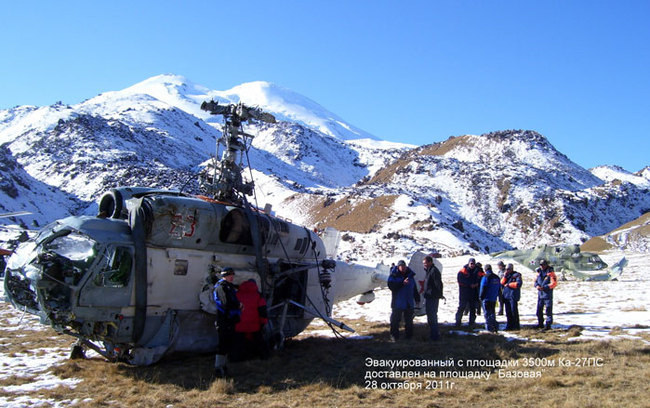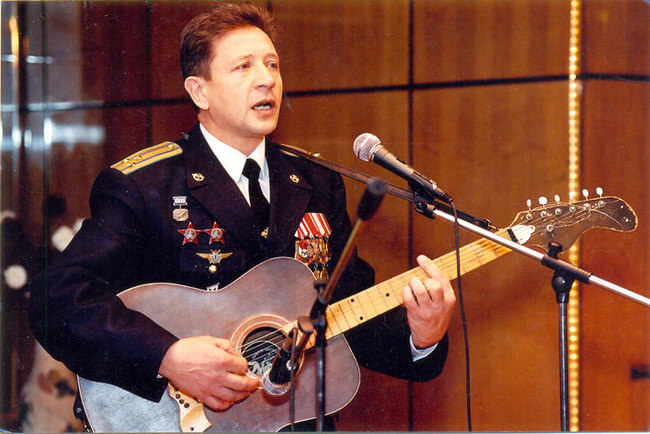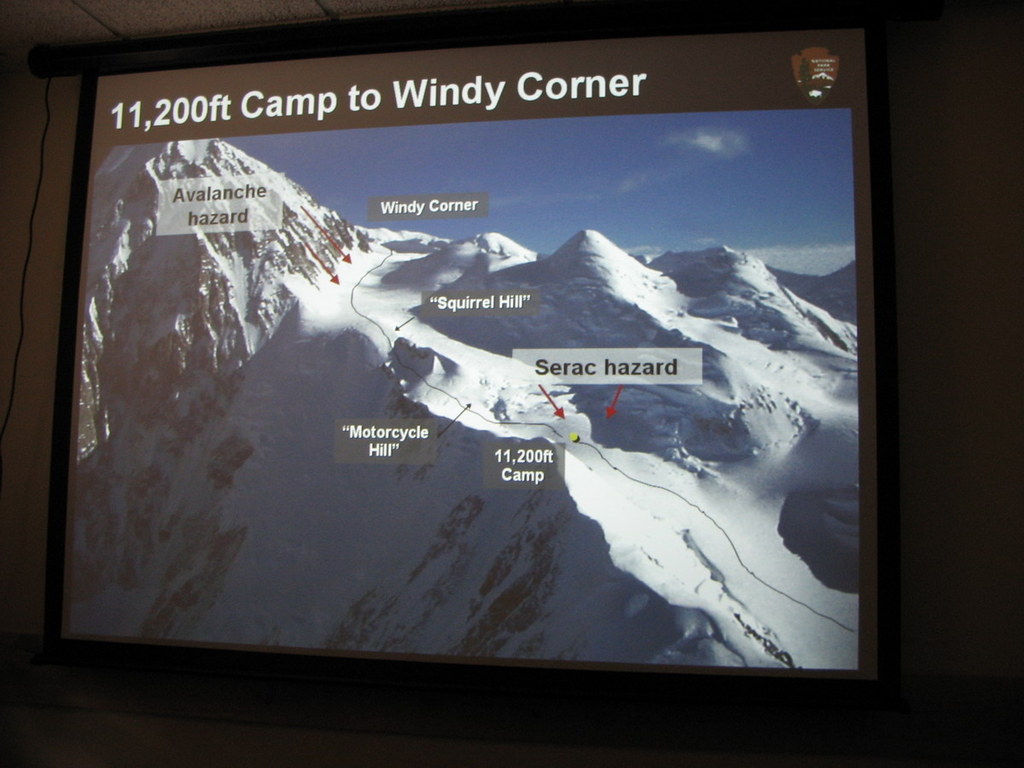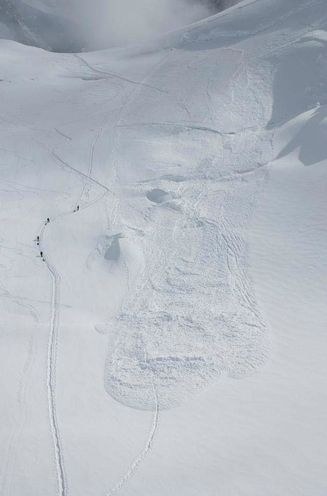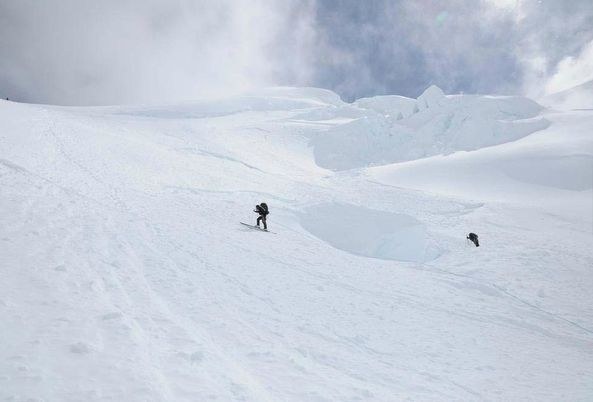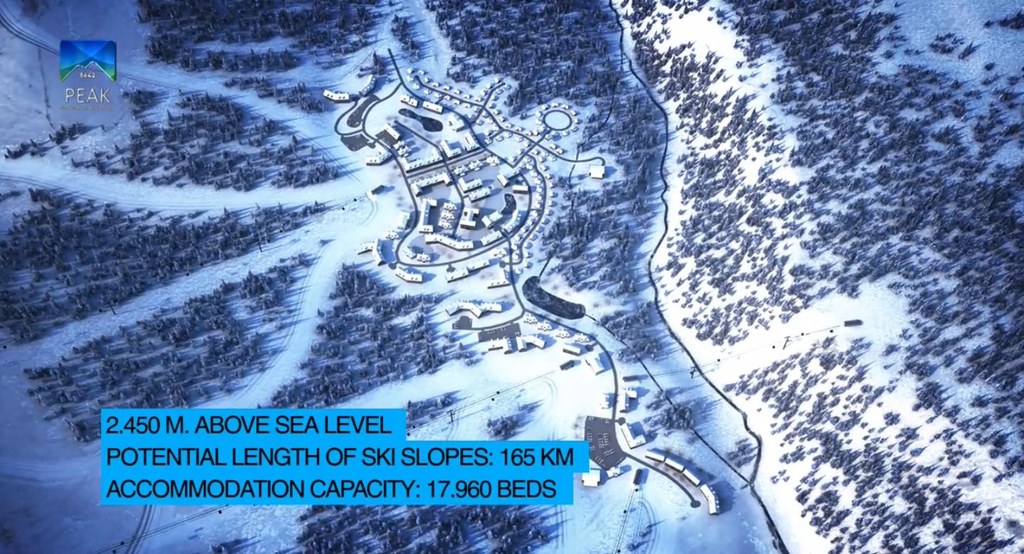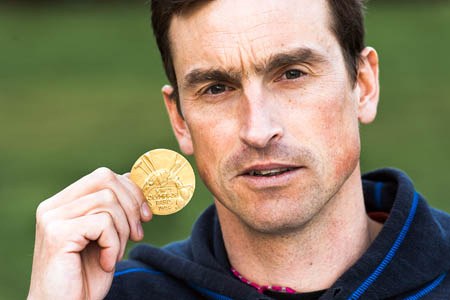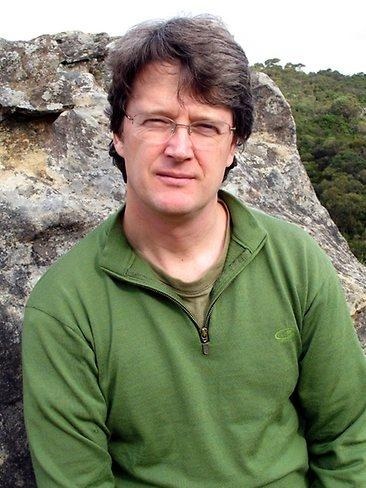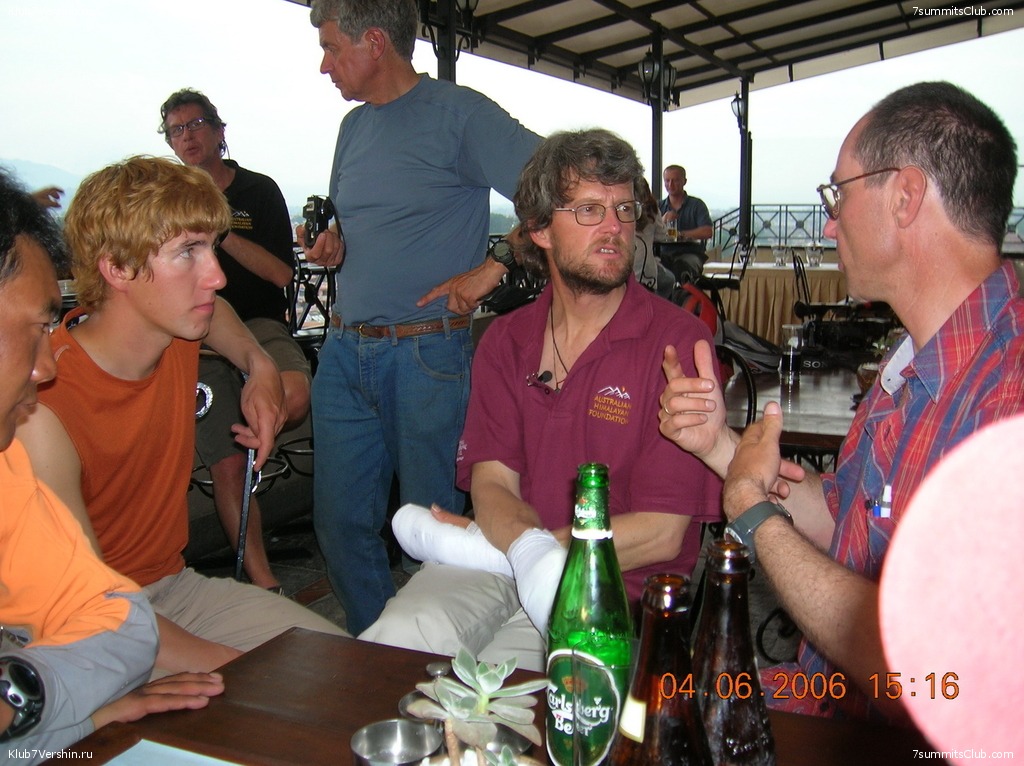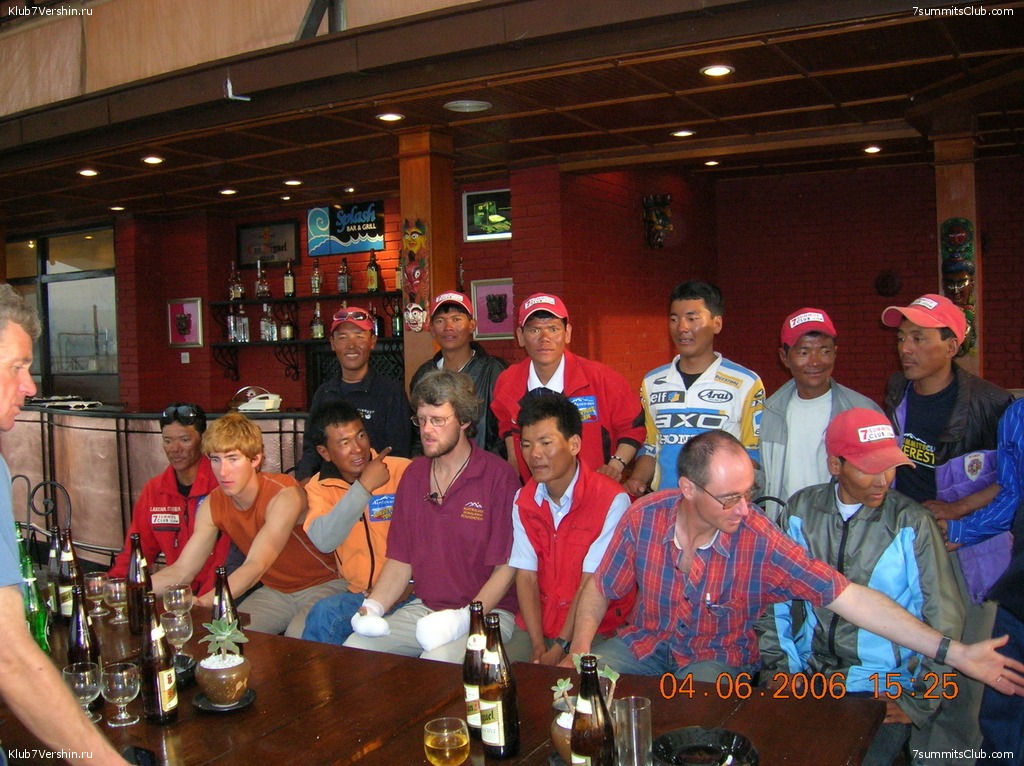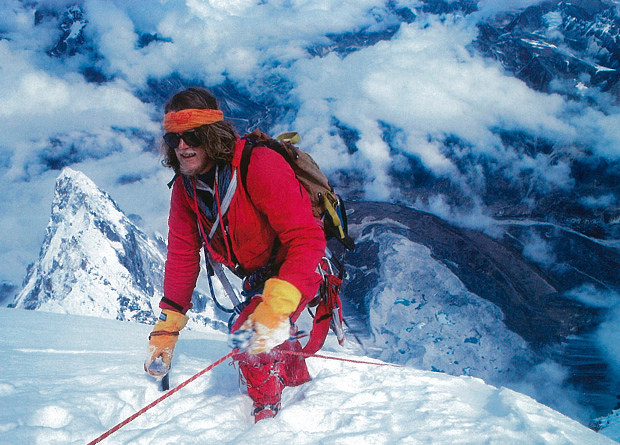World mountain's news - Page 4
Successful speed summit and decent of Manaslu in less than 24 hours
A long cherished dream of Benedikt Böhm’s came true on September 30th. After 15 hours and 3,300 metres of climbing without oxygen, he stood on the summit of Manaslu (8,163 m), the eighth highest mountain in the world . After ...
A long cherished dream of Benedikt Böhm’s came true on September 30th. After 15 hours and 3,300 metres of climbing without oxygen, he stood on the summit of Manaslu (8,163 m), the eighth highest mountain in the world . After equally exceptional climbs, his partners, Sebastian Haag and Constantin Pade, were stopped just short of the summit.
The ascent took place in the aftermath of the avalanche that claimed several lives a week before. Although over-shadowed by this tragedy, the climbers decided to make one last attempt to climb the peak because of the years of preparation and mental commitment. The fact that they had done everything possible to help the victims of the accident helped them make the decision. "The decision to try for the summit after such a tragedy was a difficult one, but ultimately I decided to climb in their honour and it also helped me cope with the emotional challenges I was also going through from being first on-scene to such a tragedy,” said Benedikt Böhm.
For Böhm and Haag, the journey up Manaslu began five years earlier. In 2007 they travelled to Manaslu with the same goal in mind, but had to turn back at 7,300 metres due to the danger of avalanches. This time around, after acclimatizing for weeks and a whole day of decision-making in base camp, the team had a stroke of luck: a weather window and stable snowpack.
Setting off at 6pm from base camp at 5,000 m and without oxygen, Benedikt and Sebastian had almost 3,300 vertical metres of climbing ahead of them to reach the summit. Conditions deteriorated at 7,400 metres and the three climbers were battling fierce storms and icy cold. Böhm, who went on ahead of the team, waited for Haag in an unoccupied tent at camp two. After an hour it was time to get underway again, and they considered abandoning the attempt, but mustered the effort to continue the ascent as a group. The wind eased off as the sun went down. Benedikt Böhm went the final 150 metres alone to reach the summit at 9 in the morning, after five hours of climbing from camp two.
Happy, but humbled in remembrance of the accident a few days previously, he did not pose for the usual victory shot on the summit. Instead he dedicated the ascent to the climbers who had died in the accident. After waiting for an hour he went back to meet with Sebastian Haag and Constantin Pade who chose to turn back 150 meters short of the summit to save their energy for a safe ski descent. “The most important thing of any expedition is first and foremost to come home safely,” commented Sebastian Haag. “The events of the past few weeks have given me even more respect for the power of these mountains and my first goal is to see my family again.” Skiing together, the group reached base camp after 8 hours of descent. The total climb, including speed ascent and ski descent, took 23.5 hours. Typical climbs up Manaslu using oxygen take four days.
It was an unbelievable achievement, not just for Benedikt Böhm, but for the whole team on Manaslu. According to official records, it is the first ever speed ascent of Manaslu coupled with a subsequent ski descent.
Opening of the rescue shelter "Station 5300 Red Fox" on the saddle of Elbrus
Elbrus.
Mountaineering Federation of Russia together with its partners have successfully completed a unique project for the rescue shelter. Installation of structures was completed in early August, and at the end of September, after months of ...
Mountaineering Federation of Russia together with its partners have successfully completed a unique project for the rescue shelter. Installation of structures was completed in early August, and at the end of September, after months of testing, there was the opening of the station Red Fox 5300. This is the highest mountain refuge inEuropeand the second highest in the world.
The history of the construction of the shelter has been a long and dramatic. In 2007, at the initiative of the Moscow climber Dmitry Guryanov, FAR established a working group to create a rescue shelter. The cause was the tragic death in May 2006 eleven climbers that have fallen into bad weather and cold for a few hours in the region of the saddle of Elbrus.
The first shelter was erected in 2010 but was destroyed in winter by wind.
Only in June 2012, a team of volunteers and rescuers from Elbrus and Ural rescue teams started installation of a new shelter.
This time all the necessary materials and construction were delivered right to the saddle with a helicopter company «Heliaction» (Helicopter (PRO) motion) "pilot Arseniy Boldyrev, and the beginning of August a shelter was erected.
Rescue shelter station «Red Fox 5300" is a non-profit rescue facilities serving volunteers and rescuers.
Shelter is open to all climbers and fans of sports and outdoor activities in the mountains.
The coordinates of the hut, set at the beginning of the rocky ridge that descends from the east to the saddle of Elbrus - right on the trail to the top of the eastern and north and south.
N 43 ° 21 '05.0 "
E 042 ° 26 '53.0 "
Rescue shelter «Red Fox 5300" is only for emergencies. Spending the night in a shelter without the necessary acclimatization can be dangerous.
Builders «Red Fox 5300" Mountaineering Federation of Russia and company Red Fox appeals to all climbers on Mount Elbrus, which have to take shelter:
• Carefully close the two doors (internal and external), it will save us from sweeping snow.
• Clean up after themselves and take away the garbage.
• Use caution when using kerosene stoves and burners: possible poisoning combustion.
A new trist news from Himalaya
Manaslu.
8 October, 2012 Annapurna. The avalanche...ILjas Tukhvatullin group was climbing from C1 to C2 yesterday, when the huge avalanche headed down... It happened on 3 p.m. Iljas and Ivan Lobanov have been burried, only one climber was not ...
8 October, 2012 Annapurna. The avalanche...ILjas Tukhvatullin group was climbing from C1 to C2 yesterday, when the huge avalanche headed down... It happened on 3 p.m. Iljas and Ivan Lobanov have been burried, only one climber was not caught. He tried to find his friends, but it was impossible... He ascended the rest 150 m to C2 - there was the safety place, the air wave only broke the tent... Then he descended to C1 and radioed to BC. Today Gleb Sokolov and his group are asceding from BC to the tragedy place to try to find somebody... It was not the serac crash, the whole icy slope fell down, perhaps as a result of earthquake...
Sir Ranulph Fiennes to attempt record Antarctica trek
South Pole.
By Matthew Price. BBC News. British explorer Sir Ranulph Fiennes is to lead the first team on foot acrossAntarcticaduring the southern winter. The six-month expedition next year is being called the Coldest Journey, crossing terrain where ...
By Matthew Price. BBC News.
British explorer Sir Ranulph Fiennes is to lead the first team on foot acrossAntarcticaduring the southern winter.
The six-month expedition next year is being called the Coldest Journey, crossing terrain where the temperature has hit -90C.
It will be 68-year-old Sir Ranulph's latest record attempt. Past feats have seen him go pole to pole and climb Everest as a pensioner.
Guinness World Records describes him as the world's greatest living explorer.
"We do it because we like to break world records," says Sir Ranulph, his bushy eyebrows icing up while on a training session close to theArctic.
"Sometimes we don't succeed, but it's what we go for. It's our specialty."
The team will be dropped off by ship on the Pacific coast of the continent and wait for the equinox on 21 March 2013 before setting off over the ice shelf.
'Impossible' expedition
A hundred years ago on the same ice shelf, Capt Scott died on his polar expedition as he was caught out by the start of the southern winter.
Achievements of Sir Ranulph Fiennes
2009: Became the oldest Briton to reach the summit ofMount Everest, aged 65, after earlier attempts
2003: Ran seven marathons on seven continents in seven days - after suffering a heart attack a few months earlier
2000: Lost most fingers on his left hand to frostbite during an unaided attempt to reach the north pole - and carried out amputations himself using a fretsaw
1992-93: First unaided crossing of the Antarctic continent
1991: Led an expedition that discovered the Lost City of Ubar on the Yemeni border
1990: Set world record for unsupported northerly polar travel
1979-82: Made the first journey round the world crossing through both the north and south poles, travelling on sea and land
- First to reach both poles and cross Antarctic and ArcticOceans
1968-69: Led the first hovercraft expedition up the Nile- the longest river in the world
Sir Ranulph and his team will start their expedition as the winter begins.
They will then ascend 10,000ft (3,000m) on to the inland plateau, and head onwards to the south pole.
After that, it is several hundred miles before they drop 11,000ft back on to the ice shelf, and finally some 2,000 miles (3,200km) after they started, they hope to reach the Ross Sea.
"We looked at this 25 years ago and realised it was impossible," says Sir Ranulph.
So why do it now?
Rivalry is a large part of the answer.
"We heard a rumour that Norwegian explorers were contemplating this. We realised we were going to have to have a go."
There are other motivations. As with previous expeditions they will raise money for charity - this time for Seeing is Believing, an initiative to fight avoidable blindness.
During the sea voyage to get to the Antarctic coast, the team will carry out scientific tasks to provide data on marine life, oceanography and meteorology.
While crossingAntarctica, they will also help scientists who are compiling information about changes to the ice shelf and the effect of climate change upon the poles.
Sir Ranulph and his fellow explorers normally pull sledges carrying everything they need with them on such journeys.
This time will be different.
The explorer is well known for taking part in the first successful circumnavigation of the world on its polar axis, completed with Charles Burton in 1982
The British government stipulates that any team heading toAntarcticafor such a trip needs to be self-sufficient.
So while Sir Ranulph and a skiing partner will lead on foot, they will be followed by two bulldozers dragging industrial sledges.
Inside three containers on the sledges will be their living quarters, supplies, and a science lab. Dragged behind this will be the fuel they need.
'Coldest place on earth'
It is as extreme as you can possibly get... Your lungs definitely suffer. The air going in is so cold it's going to freeze some of the moisture that's in that system”
Every bit of kit needs to be tested - even invented - if they are to make it alive across one of the most inhospitable terrains.
So, Sir Ranulph and his team spent several days at a vehicle testing ground in northernSwedenearlier this year.
They will expect blizzards, darkness, and whiteouts. "At -70C a wind of even just 10mph will cut you like a knife," says Sir Ranulph.
To help them avoid crevasses up to 200ft deep, the two skiers will pull a ground-penetrating radar system which will relay pictures to the lead vehicle.
Like much of the equipment, though, they do not know if it will work.
"This technology is used extensively inAntarctica, but in the summer," says Steve Holland, who is running the expedition's equipment research team.
This team is "taking a technology and pushing it even further", he adds.
"For smaller items of equipment we can do cold chamber work - and we did this with clothing. But that's to see whether it becomes brittle and is going to break.
Sir Ranulph is heading to the coldest place on Earth at the coldest time of year
"It doesn't tell you if it's going to work at those temperatures."
"It is as extreme as you can possibly get," says Dr Mike Stroud, who has accompanied Sir Ranulph on several expeditions and has been advising him on this one.
"The challenge is whether it is possible to operate and be out there in the coldest place on earth at the coldest time of the year."
"Your lungs definitely suffer. The air going in is so cold it's going to freeze some of the moisture that's in that system."
Frostbite will inevitably be a problem. At -40C during the Swedish training, the fingers of one team member simply froze up after exposure to the cold for too long.
They have been experimenting with boot warmers. Ski bindings will have to be adapted to fit the clumpy footwear.
They are also developing a giant "thermal bag" for the vehicles so the engines do not freeze during rest stops.
On one night inSweden, the temperature was -35C outside the cover, 35C inside it, simply from the heat of the running engine.
However, if any of this is to succeed it is Sir Ranulph who must make it across on foot.
And at 68 years old, is it really a wise thing to be attempting?
"You just must not think about getting old. If you still are lucky enough to be able to walk around not stooped, no crutch, no Zimmer frame, then you might as well go for it."
Putin is 60 years old! We are still waiting for his ascent on Elbrus
Everest.
Happy Birthday! We invite Vladimir Putin to climb Elbrus! We have been waiting long time for this event. Climbing the highest peak of the country by the President. Thus, he would have started the program Seven Summits, a vacation by ...
Happy Birthday! We invite Vladimir Putin to climb Elbrus! We have been waiting long time for this event. Climbing the highest peak of the country by the President. Thus, he would have started the program Seven Summits, a vacation by a summit – this is a program for 5 years. Well, seventh, Everest – will be after entering on the well-deserved rest.
By that time, we expect that in the Caucasus there will be built 10 new mountain resort, Sochi Olympics will be a success, the border withGeorgiawill be fully open, we will travel to Europe without visas, we will fly to Kamchatka cheaper than to Turkey.
October 6.
A group of climbers fromNorth Ossetiaclimbed up to one of the unnamed peaks of the Greater Caucasus Range in the region of Digoria. Mountaineers set a portrait of Russian President Vladimir Putin near the top. On this Sunday the chairman Mountaineering Federation of Republic Kazbek Khamitsaev said:
"On the rock wall near the summit we set a portrait of Putin fixed - size four to six meters, made of high quality plastic," .
Khamitsaev also noted that they will prepare a request to give a name "Peak Putin" to this peak … "Interfax".
First autumn climb in the Himalayas
Manaslu.
Mountain Professionals team: 100 Percent Summit Success1 Oct, 12 - 12:02 From camp four, with our boots still on and probably looking a bit rough at this point with crazy things still frozen to our beards, noses and who knows where else. We ...
Mountain Professionals team: 100 Percent Summit Success
1 Oct, 12 - 12:02
From camp four, with our boots still on and probably looking a bit rough at this point with crazy things still frozen to our beards, noses and who knows where else. We are vey happy to announce that our entire Mountain Professionals team, Tone, Leif, Vibeke, Fredrik, Ryan, Chhirring, Pema, and Lhakpa, reached the summit of Manaslu 8163m this morning!
A big congratulations to our climbers, they enjoyed mostly blue bird skies and some mild winds at the tip top that basically blew a little spindrift around but we could still enjoy the very narrow and steep summit pyramid.
We owe a tremendous thanks to our Sherpa guide staff, who work tirelessly from fixing line for our team in exposed sections to brewing up hot tea when they know we need it most... like right now, Lhakpa is at our tent door!
We will descend in a short time to camp two for the relative comforts there and keep continuing down with caution until the safety of base camp and send more details and photos. Thanks a lot for following, from a tired but elated group up here in the clouds.
---
Altitude Junkies: Manaslu 2012 Expedition Dispatches
Update - October 1, 2012
We have had 15 successful summits! Two of our Sherpas and one team member did not go to the summit. The team is now in the process of descending to Camp 2. Everyone is safe and doing well. A more detailed dispatch will be posted as soon as they return to base camp.
Update - September 30, 2012
The team, including Sherpas and members, are at Camp 4 and doing well. They will be heading for the summit tomorrow.
Manaslu avalanche: 12 or more victims
Manaslu.
The government has confirmed that at least 12 trekkers lost their life in Sunday’s avalanche, and the search for the rest of the missing persons is still on. The rescue operation is being jointly conducted by theNepalarmy, the police ...
The government has confirmed that at least 12 trekkers lost their life in Sunday’s avalanche, and the search for the rest of the missing persons is still on. The rescue operation is being jointly conducted by theNepalarmy, the police and the civil administration near base camps two and three of Mt Manasulu, the worst affected points by the avalanche, some 300km west from here.
The rescue operation that had been aborted around 3pm — 11 hours after the disaster — on Sunday due to bad weather , was resumed early on Monday.
Of the dead, nine have been identified — Ludo Challeat, Fabrice Priez, Cathrine Ricard and Philippe Bos (French), Domique Ouimet (Canadian), Marti Gasull and Cristine Mittermeyer (Spanish), Alberto Magliano (Italian) and Dawa Sherpa (Nepalese).
“Their bodies are being brought toKathmanduand their families will be notified,” a Home Ministry official told this correspondent.
According to official information, six bodies have been brought toKathmanduand their bodies kept in the mortuary on the German embassy premises.
Altogether, 18 others are getting treatment in local hospitals “and the search mission is on” to locate the other “missing”, the official said.
Bad weather and poor accessibility have been hampering the search mission.
Kilian Jornet Burgada, Innominata Ridge and Mont Blanc in 6 hours 17 minutes
20.09.2012 by Planetmountain. On 18 September Spanish ski mountaineer and sky runner Kilian Jornet Burgada ascended from Courmayeur to the summit of Mont Blanc via the famous Innominata Ridge (1000m, D+, V+, 60º) in 6 hours and ...
20.09.2012 by Planetmountain. On 18 September Spanish ski mountaineer and sky runner Kilian Jornet Burgada ascended from Courmayeur to the summit of Mont Blanc via the famous Innominata Ridge (1000m, D+, V+, 60º) in 6 hours and 17 minutes. The Spaniard then raced down to Chamonix in a total time of 8 hours 42 minutes.
Setting off at 3:53am from the church at Courmayeur, the Catalan champion ascended alone up the beautiful Val Veny to reach the Monzino hut (2590m) at 5:25am from where the real difficulties begin, i.e. the glacier which leads to the Eccles bivy at 4041m. Much to his surprise the glacier was in excellent condition and Jornet managed to ascend quickly using crampons up to the bivy, from where a short abseil led him to the Innominata Ridge which he had climbed a few days earlier.
"Once I had completed the rappel and the tough long stretch, where I did not find any snow, I could breathe more easily." said Jornet, adding "I knew I could manage the Innominata, as I had done it a few days before. It is a very technical route with slopes of 60 °, and climbing passes of difficulty V+, so I had to use all my senses. Luckily I didn’t find a lot of snow or ice on it." Jornet summited Mont Blanc at 10:15am, 6 hours and 17 minutes after departing Courmayeur, and after a short 5 minutes break he headed straight down to the church at Chamonix which he reached in a mere 2 hours and 19 minutes. In total, 8 hours 42 minutes for this round-trip Courmayeur - Mont Blanc - Chamonix.
It is worth remembering that this rapid ascent is part of the second chapter of the Summits of My Life project and that the first stage - the Mont Blanc traverse - was overshadowed by the tragic death of his companion and ski mountaineering champion Stephane Brosse.
Details:
Start: Courmayeur (Valle de Aosta, Italy)
Finish: Chamonix (France)
Distance: 42 km
Height gain: 3,810m via the Innominata Ridge
Split times: Courmayeur - Val Veny: 40'; Val Veny - Rifugio Monzino: 1h30-50'; Monzino - Eccles: 3h30-2h; Eccles - Mont Blanc: 6h17-2h47 (5’ stop at the summit); Monte Blanc - Gouter: 6h50 -27'; Gouter - Houches: 8h15 -1h25; Houches - Chamonix: 8h42’57’’
Watch the video of the ascent on: www.esport3.cat
Source:
http://www.planetmountain.com/english/News/shownews1.lasso?l=2&keyid=40061
North Caucasian resorts should provide good services - Putin
Elbrus.
North Caucasian resorts should provide tourists with good services, Russian President Vladimir Putin said today at a meeting with the head of Karachay-Cherkessia, Rashid Temrezov, RIA Novosti reports. "Good services and trained personnel ...
North Caucasian resorts should provide tourists with good services, Russian President Vladimir Putin said today at a meeting with the head of Karachay-Cherkessia, Rashid Temrezov, RIA Novosti reports.
"Good services and trained personnel are the most important things," Putin said.
"It is necessary to provide tourists with better services than European competitors. I believe that is a possible aim to achieve," Putin added.
Start of Autumn Season
Manaslu.
September, 8 a group of the mountaineering club “Vladimir Ratsek” from Uzbekistanheaded by Ilyas Tukhvatullin flies to the capital of Nepal Kathmandu. Their goal is Mount Annapurna, from the North (French route or Dutch Rib). ...
September, 8 a group of the mountaineering club “Vladimir Ratsek” from Uzbekistanheaded by Ilyas Tukhvatullin flies to the capital of Nepal Kathmandu. Their goal is Mount Annapurna, from the North (French route or Dutch Rib).
Members of the expedition: Alexander Bykov (born 1988), Yevgeny Yegorov (1956), Sergei Ilyasov (1957), Andrew Kutsy (1959), Ivan Lobanov (1961), Dmitry Serebryakov (1964), Gregory Yudin (1955).
Ilyas Tukhvatullin - one of the strongest climbers bothRussiaandUzbekistan. With a team of Russia, he was on the record routes on the North Face of Mount Everest and K2 West Face. To his credit there are many ascents of peaks above 7,000 meters, the climb of the North Face of Khan Tengri in duo with Pavel Shabalin, winter first ascent of the North Face of Aksu etc….
This season, the famous mountaineer Gleb Sokolov also goes to the Annapurna, and some climber from Moscow.
http://racek-club.climberca.com/
Autumn in the Himalayas...
Manaslu became the most popular autumn mountain in recent years. Once Chinahas restricted access to the peaks of Tibet (Cho Oyuand Shisha Pangma) an expedition Alpine Ascents International went to Manaslu (guide Garrett Madison). AsGermany's commercial expedition Amical (guide Herbert Wolf) and a team fromIndia, including a young climber Arjun who aim to go all 14 eight-thousanders. And a small commercial group gathered by American guide Ryan Water.
For the media, perhaps the most interesting event is an attempt of 73-year-old Spaniard Carlos Soria to climb his 12th eightthousander -Dhaulagiri. Almost no one would bother Everest this season. Polish expedition led by the indefatigable Arthur Haizer will run on its southern slopes. But its aim isLhotseby the normal route. Elbrus record holder Andrew Bargiel from Zakopane is one of its members. His goal - speed record ascent ofLhotse. From the base camp to the top a record holder is Mexican Carlos Carsolio climbed 23 hours 50 minutes. Autumn is a lot of snow, but it will not be the crowd on the railing.
The Polish team. On the left is 49-year-old leader, and near him 24 years old Elbrus record-holder
Mexican couple "Yuri - Laura" Yuri Contreras and Laura Gonzalez are now he trail through jungles to the foot ofMakalu, their next eight-thousanders.
Well, one more note. Declared Sophie Denis French expedition on Shisha Pangma will not take place. Do not blame the Chinese, just Sofia decided to become a mother. So her plan to complete the collection of 14 eight postponed or canceled. Time will tell.
Wolfgang Fasching has completed his own version of the Seven Summits - for the Alps
Known Austrian athlete, cyclist and mountain climber, 45-year-old Wolfgang Fasching completed his version of the "Seven Summits - for theAlps." According to his idea, it was necessary as soon as possible to climb to the highest point of the ...
Known Austrian athlete, cyclist and mountain climber, 45-year-old Wolfgang Fasching completed his version of the "Seven Summits - for theAlps." According to his idea, it was necessary as soon as possible to climb to the highest point of the seven Alpine countries, with the move from one region to another on a bicycle. The composition of the Seven Summits of the Alps were: Mont Blanc (4810 m,France), the Gran Paradiso (4061 m,Italy),DufourPeakin the Monte Rosa massif (4,634 m,Switzerland), Grauspitse (2599 m,Liechtenstein), Zugspitze (2962 m ,Germany), the Grossglockner (3798 m,Austria), Triglav (2864 m,Slovenia).
Thanks to the good weather, Fasching succeeds without delay, less than 10 days (12 - 22.08. 2012). On the bike he rode more than 1,100 kilometers and climbed to an altitude of over 16,000 meters. Fasching is Technical Advisor of the 7 Summits project of SPORT EYBL & SPORTS EXPERTS GmbH
Wolfgang Fasching, born in Bad Radkersburg in 1967, lives in Neukirchen in Upper Austria. Married to Doris and father of Simone, he is an eight-time finisher of the Race across America (RAAM), the longest and probably toughest bikerace from the East Coast to the West Coast of the United States. Today, the three-time winner of this race works as a lecturer and presentator in the field of"mental strengths" He is a skilled painter, merchant with the examination for the master craftsman´s diploma and, since 2003, holder of a helicopter pilot´s license. Winner of the RAAM, XXALPSá 24 h World champion, world record holder in 12 h and 24 h bike racing, 24 h European champion in mountainbiking, World record holder “Crossing Australia” from 1999 – 2007, successful ascent of the Mount Everest in 2001, completed 7 Summits at 2009.
Christian Stangl gave evidence on K2
The famous Austrian skyrunner Christian Stangl returned home from the Karakoram. After successfully climbing the second highest peak of the world - K2, he completed a program of "seven second summits of all continents." Now the 46-year-old ...
The famous Austrian skyrunner Christian Stangl returned home from the Karakoram. After successfully climbing the second highest peak of the world - K2, he completed a program of "seven second summits of all continents." Now the 46-year-old athlete is committed to complete the program, "21 century - 21 summits", that is to climb the three highest peaks of all continents. Next year Stangl should climb up to the third highest peak in the Caucasus Shkhara. This is a rather complicated and dangerous peak, the official height of 5193 meters. It can be climbed both from Russia and from Georgia- Shkhara is the highest peak in this country.
After attempting to false an ascent in 2010, Stangl shared attention to the proof of the fact of reaching the top. Among other things, he made a panorama.
Photos published by Adam Bielecki.
Ex-WWE Wrestler Attempts To Climb Mt Elbrus
Elbrus.
July 4, 2012. BERNEWSPart time Bermuda resident John “JBL” Layfield recently attempted to climb Europe’s highest mountain, with the aim to plant both a WWE and Bermuda flag at the summit.Mr Layfield, best known as a former ...
July 4, 2012. BERNEWS
Part time Bermuda resident John “JBL” Layfield recently attempted to climb Europe’s highest mountain, with the aim to plant both a WWE and Bermuda flag at the summit.
Mr Layfield, best known as a former WWE professional wrestler, entrepreneur and host of the Fox Business Network’s “Cashin’ In” programme, helped found the charitable Beyond Rugby Bermuda organization to benefit children on the island.
Recently honoured for his work in Bermuda, Mr Layfield’s latest effort is the “Seven Summits Bermuda Challenge” in which the 45-year-old athlete will be attempting to plant a Bermuda flag on the top of the highest peak of every continent in an effort to raise money for kids in Bermuda through the Family Centre.
He started out trying to climb the highest mountain in Europe — Mount Elbrus located in Russia — however had to turn back right before reaching the summit due to weather conditions creating a safety hazard.
Speaking after his recent trip, Mr Layfield said: “I had three goals in trying to climb the highest mountain in Europe, 18,511 feet high Mt Elbrus. I wanted to raise money for the kids I work with daily in Bermuda (Beyond Rugby Bermuda), I wanted to plant a WWE and Bermudian flag on the summit and I wanted to not die. I accomplished two out of the three.
“I’m 45 years old and have had a broken back, four knee surgeries and two herniated discs-so I knew this would not be easy. But, we tell our kids daily that everyone has problems, it’s what you do with what you have that matters. I wasn’t just raising money for the kids; I was doing my best to set an example. We all have mountains to climb, mine ahead of me were just literal.”
Mr Layfield trained for over half a year for Mt Elbrus, and had gotten to where he would do a stair master up to three hours straight. He and his team flew to Moscow, and made their way to the Baksan Valley which is located just north of Georgia and next to Chechnya.
After arriving Mr Layfield saw they took two climbs from base camp and the second to over 15,000 feet to finish their acclimatization. “The second climb was about eight hours and though hurting I made the climbs in good form, I felt great about summit day,” said Mr Layfield.
The actual day arrived, and the team set off in their quest to reach the top of the mountain. ”After climbing for 7 ½ hours we were at the beginning on the “saddle’ between the mountain’s two peaks. I can’t describe the effort these 7-½ hours took to climb,” said Mr Layfield.
“We stopped for lunch and I discovered that my lunch had somehow been squished and ruined. However, we were only about 1,000 feet from the summit-though that 1,000 feet would take 4-5 hours. It looked so close.
“Vladimir had gotten concerned by the weather and was warning us we might have to turn back but now he was adamant. He told us, correctly, that if we continued that we would be caught up by what turned out to be a huge storm. I did not want to turn back, at all.
“We were so close and I had worked so hard, to turn back now was something that didn’t even seem realistic. The summit was so close you could almost touch it.
“Chris reluctantly had agreed with Vladimir. Chris is a mountain veteran who hated to give up on the summit, I was climbing for my kids and the thought of turning back was so hard to digest. However, we finally all agreed that we ran the risk of being stuck on the mountain if we continued. And, my third goal of not dying would have been put in jeopardy.
“I just sat there for some time looking at the summit and thinking of the support that the WWE had given me and the greater goal of helping kids that need it. It was one of the saddest moments of my life,” Mr Layfield continued.
“We turned back. Chris and I both were totally out of gas. Climbing down is almost as hard as climbing up; the snow had softened so we sank into the snow on most steps. At one point we sat down and slid down part of the mountain. Vladimir was helping me so much; Chris’ guide Albert was helping him as well. I don’t ever remember being that spent.
“At one point Vladimir had me take off my crampons and harness and we slid roped together down the mountain with Vladimir behind me to help put on the brakes as we got too fast.
“We made it down at 2pm, half a day after we started. The storm was now setting in and Vladimir was right in his warning and advice. There is a good chance that we could have been in dire trouble if we had continued; we could have easily been stuck on the mountain.
“The storm has closed the mountain and so there is no hope of another summit attempt-I will have to return next summer. My lips bled badly this morning (from exposure) as I tried to brush my teeth and my blisters are so bad I can’t wear shoes, but everything I have wrong is temporary and I just had the wildest week of my life and loved every second of it.
“I did get a great pic with the WWE and flag at over 17,000 feet and got a pic with the Bermuda flag for my kids (and to say thanks to the government there for the support they give our program and to our partner The Family Center).
“I have Kilimanjaro scheduled next in September. My feet will be better than and I will have a couple more months of training and the experience of being at altitude. I plan on making the mountain and then it’s to South America and then to Antarctica all by January. I have Mt Everest scheduled for spring of 2014.
“I tell my kids you can only control what you can control and you can’t worry about what you can’t. I can’t control the weather, but the mountain didn’t break me, so I’m getting geared up for round two. I still plan on making the Seven Summits but realize now why only a few hundred people have ever done it, these are world-class mountains.
“Most importantly I have my WWE and Bermudian flag all packed and ready to go to Africa for round two. We are only just beginning,” finished Mr Layfield.
The Seven Summits news
McKinley.
Mc-Kinley rename. Murkowski Urges Colleagues to Alaskanize Mount McKinley, Talkeetna Ranger Station. Senator Lisa Murkowski today pushed for support of her bill that would officially restore the nation’s tallest peak, ...
Mc-Kinley rename. Murkowski Urges Colleagues to Alaskanize Mount McKinley, Talkeetna Ranger Station.
Senator Lisa Murkowski today pushed for support of her bill that would officially restore the nation’s tallest peak, MountMcKinley, to its traditional Interior Alaska Athabascan name: Denali. In a hearing of the Senate Energy and Natural Resources National Parks Subcommittee, she also advocated for her legislation that would rename the Talkeetna Ranger Station after the first man to summitDenali: Walter Harper. More read >>>>>>>
Oi maamme, Suomi, synnyinmaa, soi, sana kultainen!
The first Finn on the Seven Summits is Atte Miettinen . who climbedMt.Mc-Kinley 12.06.1012
http://www.facebook.com/AtteSevenSummits
Premlata misses Mt McKinley....
Not all climbers make wise decisions when they are 700ft from the summit. A 46-year-old homemaker from Jamshedpur did and one Australian, Krish, knows that it saved his life.
Premlata Agarwal, the oldest Indian woman to ever conquer the Everest, fell agonisingly short of scaling Alaska’s Mt McKinley, popularly known as Denali, on June 3 when she was forced to abort her attempt, just an hour from the peak, to help bring down a fellow climber.
British climbers Andy Houseman and Nick Bullock have repeated the huge Slovak Direct on Denali, Alaska.
Houseman has just tweeted:
"Slovak Direct DONE! 4 days of nearly constant snow, a 27hr push, 16hr unplanned.. What an amazing route! WOW!"
The route is a huge 3000m (ish) climb on the steep South Face of Denali, and retreat is near impossible after the first 1000m have been climbed.
http://www.ukclimbing.com/news/item.php?id=67229
American climb 2010
Qobin Completes Seven Summits
Elbrus.
Qobin Completes Seven Summits Seven Continents Expedition SEPANG, June 21 (Bernama) -- National mountaineer, Muhammad Muqharabbin Mokhtharuddin or Qobin managed to complete the last mission of the Seven Summits Seven Continents Seven Values ...
Qobin Completes Seven Summits Seven Continents Expedition
SEPANG, June 21 (Bernama) -- National mountaineer, Muhammad Muqharabbin Mokhtharuddin or Qobin managed to complete the last mission of the Seven Summits Seven Continents Seven Values Expedition by conquering Mount Elbrus, Europe's highest mountain, on June 13.
Following the feat, the 30-year-old has joined the rank of 400 mountaineers worldwide who have completed the Seven Summits Seven Continents expedition so far.
Speaking to reporters on his arrival at the Kuala Lumpur International Airport here Thursday, he said the success was a special gift to Prime Minister Datuk Seri Najib Tun Razak and Malaysians who provided great support for his endeavour.
Qobin started his quest at the world's tallest mountain, Mount Everest (Asian Continent) in 2004 and summitted five other peaks between 2010 and 2012.
He began with Kilimanjaro (African continent) in 2010 and went on to Kosciousko (Australasia), Aconcagua, Argentina (South American continent), Vinson Massif (Antartica) and completed Mc Kinley, Alaska on the North American continent last year.
How two broken helicopters were removed from the slopes of Elbrus
In October 2012 two helicopters fallen on the slopes of Elbrus had been successfully removed. Vladimir Horev, Test Pilot Enterprise "Rostvertol" led this unique operation. At the same time it was established seven world ...
In October 2012 two helicopters fallen on the slopes of Elbrus had been successfully removed. Vladimir Horev, Test Pilot Enterprise "Rostvertol" led this unique operation. At the same time it was established seven world records at once!
Military ... Mi-8 helicopter crashed in the northern slope of Mount Elbrus July 27, 2010 during a training landing .. Fortunately, there were no casualties, but the machine was left lying on its side, at an altitude of 4820 meters above sea level. . The decision to evacuate the helicopter was taken at government level, which was confirmed in the form of the order of Commander of the Air Force. The operation began in 2010. But then it became clear that the helicopter must first be disassembled into several parts.
In the summer of 2011 two more accidents involving helicopters have taken place on the northern slope of Mount Elbrus. First, a little private "Robinson" made an unsuccessful landing. Then, the KA-27, who unsuccessfully tried to remove the "Robinson".
In October 2011 a large powerful helicopter MI-26 took off fallen MI-8 rom the cliffs Lenz. And later KA-27 was removed from 3500 meters in the western part of Elbrus. The operation was very difficult and risky, but well over.
Fully material can be found in Russian
http://olenalex.livejournal.com/95833.html
Vladimir Horev
Search called off for 4 climbers believed killed on McKinley
McKinley.
Japanese climbers believed to have died on McKinley glacier. By KYLE HOPKINS. Anchorage Daily News. Published: June 17th, 2012 06:52 PM Update: The search for four climbers presumed dead in an avalanche on MountMcKinley has ...
Japanese climbers believed to have died on McKinley glacier.
By KYLE HOPKINS. Anchorage Daily News. Published: June 17th, 2012 06:52 PM
Update: The search for four climbers presumed dead in an avalanche on MountMcKinley has been suspended, the National Park Service said Sunday.
"A two-day ground search of the debris path from afatal avalanche onMt.McKinleyhas been suspended after clues were found confirming the likely location of four deceased climbers," the Park Service said in a written statement.
"An aerial hasty search took place on June 14 followed by an initial four-member NPS ground search the following day. On Saturday, June 16, an expanded 10-person ground crew consisting of NPS rangers, volunteer patrol members, a dog handler, and a trained search and rescue dog probed and further investigated the debris zone.
"During the search, NPS mountaineering ranger Tucker Chenoweth descended into the same crevasse that the survivor Hitoshi Ogi had fallen into during the avalanche. While probing through the debris roughly 30 meters below the glacier surface, Chenoweth found a broken rope end that matched the MWAF team's rope. He began to dig further, but encountered heavily compacted ice and snow debris. Due to the danger of ice fall within the crevasse, it was decided to permanently suspend the recovery efforts."
Earlier story: Four Japanese mountain climbers are believed dead following an avalanche early Thursday morning onNorth America's tallest peak.
The 800-foot slide came at about 2 a.m. as the five-person team was roped together, descending a popular route down Mount McKinley, according to the National Park Service. Four of the climbers, all in their 50s and 60s, disappeared in the snow.
The lone survivor is a 69-year-old man who fell about 60 feet down a crevasse -- a deep crack in the ice -- but scrambled to safety with no significant injuries.
"The rope had broken so he was separated from the rest of his team members," said Maureen McLaughlin, a Park Service spokeswoman in Talkeetna.
The slide appears to be the most deadly single accident on the mountain since four Canadian climbers were killed in a 1992 fall high on the mountain, according to Park Service records.
The avalanche began at about 11,800 feet, according to the Park Service. It was about 200 feet wide, piling roughly three to four feet of snow and debris on the glacier, McLaughlin said.
The survivor, Hitoshi Ogi, was the last climber on the rope line and the highest on the mountain when his friends vanished. He walked and climbed to the surface of the crevasse following the fall, McLaughlin said. When he found no sign of his companions he spent much of the day making his way another 4,600 feet down the mountain reporting the accident at the Kahiltna base camp shortly after 4 p.m.
"I don't know if he had a radio. He lost quite a bit of his gear in the crevasse," McLaughlin said.
"His hand was wrapped up and I'm not sure if that was frostbite or injury," she said.
A subsequent aerial search by Park Service rangers that evening found no sign of the missing climbers or their gear.
A team of about 10 searchers, including an avalanche rescue dog named Sisu, was on the mountain Saturday looking for the remains of the other four climbers, McLaughlin said. They are presumed dead because of the time that has passed since the slide.
The missing climbers, two men and two women, were identified as:
• Yoshiaki Kato, 64
• Masako Suda, 50
• Michiko Suzuki, 56
• Tamao Suzuki, 63
All are from Miyagi Prefecture,Japan, and members of a Japanese alpine club called Miyagi Workers Alpine Federation. McLaughlin said she did not know if Michiko Suzuki and Tamao Suzuki were husband and wife.
The Consular Office of Japan inAnchorageworked to provide information to the climbers' families following the accident, an official with the office said Saturday.
All five mountaineers appeared to be making their first attempt to climb the 20,320-foot peak, according to the Park Service. Some of the group listed prior experience on peaks such as Kilimanjaro andMount Fuji, McLaughlin said.
The climbers were descending an area known as Motorcycle Hill on the main route ofMountMcKinley's West Buttress
"It's about a 35-degree slope, just a gradual climb. Generally snow and ice fields," McLaughlin said.
While not a particularly treacherous portion of the climb, the area is "prone to some avalanche activity," she said. McLaughlin was not aware of any previous avalanche deaths in the area.
Another slide was reported earlier in the week higher on Denali, at about 15,500 feet, she said. That avalanche resulted in injuries but no deaths.
On McKinley, falls kill climbers far more often than snow slides, according to Park Service records. Descents high on the mountain are particularly deadly, said Daryl Miller, a retired mountaineering ranger who worked in the area for 17 years.
So far this season, 234 people have reported reaching the 20,320-foot summit. The weather recently turned against mountaineers, however, and Park Service officials assume the Japanese expedition did not summit.
Winds of 25 to 45 mph and cumulative snowfall of about two feet over the past week or two has thwarted climbers' attempts to reach the mountaintop, McLaughlin said.
"The same rough weather conditions led to the avalanche conditions," she said. Overall, the weather was not unusually bad for Denali and began to clear up on Thursday, McLaughlin said.
Including the Japanese climbers, six people have died on Denali this season.
A Finnish mountaineer skiing down a 40- to 45-degree slope called The Orient Express died May 23 after tumbling 2,000 feet. The 36-year-old landed in a crevasse at 15,850 feet, according to the Park Service.
On May 18, a climber fell more than 1,000 feet to his death after trying to grab a sliding backpack at about 16,200 feet.
The Japanese expedition began its climb on or about May 26, according to the Park Service. The average expedition takes about 17 or 18 days, she said.
The climbing season on Mount McKinley peaks in late May and early June, she said. As of Saturday, there were 395 climbers on the mountain. Most are on the West Buttress route.
Arkhyz: ski resort with a past gets a reset. VIDEO
Elbrus.
Vsevolod Pulya. The first chair lift and two trails opened March 18 in the North Caucasus resort of Arkhyz. Alexander Khloponin, presidential envoy to the North Caucasus Federal District, was the first skier to come down the slopes. In a ...
Vsevolod Pulya. The first chair lift and two trails opened March 18 in the North Caucasus resort of Arkhyz. Alexander Khloponin, presidential envoy to the North Caucasus Federal District, was the first skier to come down the slopes. In a celebratory speech afterwards, he noted that while this was certainly a signal event, “there is still much more to do.”
Jam made from pine cones, Cossack fur hats, mountain herbs for tea drinking, sweet homemade wine: these are the sorts of souvenirs tourists bring back from Arkhyz. At local stands they can also buy refrigerator magnets showing snowboarders and skiers against dramatic mountain backdrops. In reality, however, there aren’t any ordinary skiers on the slopes yet. Construction of the Arkhyz Resort has only just begun: instead of hotels there are improvised camp sites, there is almost no cell phone coverage, and there was no point paving the 8.5 miles road to the resort ahead of Sunday’s opening since the heavy construction trucks would destroy it in a matter of weeks.
Before the construction began, the only people who came here in winter were extreme skiers with plenty of money – or at least enough to hire a helicopter to drop them at the top of Arkhyz’s virgin trails. In the summer, mountain biking and rock climbing without the necessary infrastructure attracted only the daredevils.
But Arkhyz, which gets some name recognition from a widely distributed mineral water of the same name, is a resort with prospects. In the local dialect, Arkhyz means “beautiful girl,” and a glance at the landscape is enough to see why. Arkhyz is also in a very convenient location: less than four hours by air from most countries in Europe, Asia and the Middle East. The nearest international airport, in Mineralye Vody, is only 125 miles away; the region also plans to build some smaller airports for private planes.
A Russian Les Arcs
Many of those who attended the opening ceremony at Arkhyz sported hats and scarves bearing the Latin words per angusta ad augusta, which means “through ravines to the heights.” The real heights at Arkhyz are still to be scaled. The new four-seat chairlift takes skiers up only 377 feet, to an altitude of 5,800 feet; the resort itself sits at an altitude of 5,400 feet above sea level. The first two trails are 2,200 and 3,600 feet long. The next stage — construction of five hotel complexes with 700 rooms – will be completed by this fall, in time for the start of the new ski season. By then, the combined length of open ski trails will be almost four miles. These figures may seem modest to inveterate downhill skiers, but these are just trial balloons. Arkhyz has more ambitious plans. “The real work on this resort will begin at the end of the year when we propose specific sites to investors,” Khloponin declared at a post-ski press conference.
Related :
The Caucasus – Ancient traditions and a complex history
Fighting terrorism with tourism
Time to remember, heal and build a good name
The builders say that when it’s finished, Arkhyz will be comparable to Les Arcs, the French ski resort in the Alps. All told, eight years from now, Arkhyz will consist of four tourist complexes housing a total of 24,000 guests; 54 ski lifts able to carry 45,000 skiers a day; ànd ski trails totaling 167 milres in length. All of this will be available with a single ski pass. At Resorts of the North Caucasus (KSK), the company in charge of developing the tourist cluster in the North Caucasus, specialists say that once Arkhyz is finished and in full operation, it should draw more than half a million skiers a year.
The first goal of the resort is to make downhill skiing affordable for averages Russians. “Resorts in the North Caucasus cluster should not compete among themselves,” said Alexei Nevsky, general director of KSK. “We have to develop a single concept, a single marketing and price policy.”
This project also has a social mission: it will create 10,000 jobs in the Republic of Karacheyvo-Cherkessia, according president of the republic Rashid Temrezov. At any rate, local grandmothers are ready to take in guests: their homemade meat pies and wool socks are already selling well.
Nature and history
Facts and figures
1,440 and 3,300 meters (4,700 feet-10,800 feet) above sea level is the difference in altitudes in Arkhyz Valley. The highest points: Mt. Pshish and Mt. Sophia
60 glaciers and mountain lakes are located in the valley
12 waterfalls crash down from the Sophia Glacier
170 km (105 miles) is the length of the resort’s main waterway: the Zelenchuk River
+14.8 Celsius (58 Farenheit) is the average air temperature in summer
- 5.6 Celsius (21 Farenheit) is the average temperature in winter
0,5-2,5 meters (18 inches-8 feet) is the average thickness of the snow cover
The Arkhyz Gorge is protected from strong winds and blessed with a mild climate. Its alpine slopes are covered with dense stands of fir trees and pine trees and it is the home of 26 natural mineral springs.
Meanwhile, for non-skiing tourists or those who want a break from the slopes, there are some unique local excursions. A mysterious natural icon of Christ is carved right on the steep left bank of the Zelenchuk River. Christ’s face looks down on ancient churches and the remains of the ruined city of Maas. The oldest of the churches was built 1,200 years ago, making it the most ancient religious edifice in Russia.
Thirty-seven miles to the west of Arkhyz is Adyukh Mountain, which has a small tower on its summit. The mountain and its fortress were named in honor of a girl who, as legend has it, was so unhappy in love that she threw herself off the mountain top; another legend claims that she threw off the rope ladder on which her unfaithful lover, a horse thief, was climbing. Visitors able to climb the 730 steps up to the top will be rewarded with a magnificent view of the Zelenchuk River and surrounding valley — the horizon stretches away to Abkhazia.
At the foot of Mt. Adyukh is the Adyukh Palace Hotel, whose owner is a veteran collector of antique automobiles. His collection includes a 1950s Mercedes, and old UAZ that has not driven even one mile in all its 40 years of existence, and a complete collection of Volgas, Chaikas and ZIMs.
A new cluster
The Legend of Caucasus - watch video
Arkhyz is KSK’s debut project. By 2020, KSK plans to have fully developed this tourist cluster with world-class ski resorts throughout the North Caucasus. Meanwhile, Dagestan’s Caspian Sea coast will be dotted with beach resorts. When construction of the cluster is complete, it will boast a combined total of 680 miles of downhill ski trails and 227 ski lifts, as well as hotels, apartments and cottages for 102,500 people.
Northern Caucasus resorts map + info. Click to view infographics
KSK anticipates that this cluster will receive between 5 and 10 million vacationers every year. The total volume of federal investment in the transport infrastructure and communications of resorts in the North Caucasus should equal 60 billion rubles ($20 billion). The Sinara Group, an investor in and builder of Arkhyz, put up 1 billion of the 3 billion rubles already spent on building the resort and its infrastructure. The project’s financing is being conducted on the principles of a government-private partnership. The project will receive a total of 80 billion rubles ($2.7 billion) in investment.
These Russian investors are expected be followed by foreign investors; investors from France and South Korea have already signed agreements on a joint enterprise, according to Nevsky. He confirmed that the South Korean company Korea Western Power is ready to invest $1 billion in the cluster’s electricity supply network, while the investment bank Singapore Nexus means to invest in the development of hotels.
Everest pioneer's Olympic medal heads to summit
Everest.
UKclimber Kenton Cool will fulfil vow to take medic ArthurWakefield's Olympic medal toHimalayas90 years after tragic prior expedition Peter Beaumont. The Observer, Sunday 1 April 2012 British mountaineer Kenton Cool was ...
UKclimber Kenton Cool will fulfil vow to take medic ArthurWakefield's Olympic medal toHimalayas90 years after tragic prior expedition
Peter Beaumont. The Observer, Sunday 1 April 2012
British mountaineer Kenton Cool was sitting in the check-in lounge at Gatwick airport last Thursday with a locked waterproof box that, if all goes according to plan, will not leave his side until he reaches Everest's summit for a 10th time this spring.
The box contains the Olympic medal awarded to Arthur Wakefield, a medic on the unsuccessful 1922 Everest expedition that ended in tragedy when an avalanche killed seven porters.
If Cool succeeds in climbing the world's highest mountain again, he will have honoured a pledge by Lieutenant Colonel Edward Lisle Strutt, deputy leader of the pioneering 1922 expedition, made to Baron Pierre de Coubertin, who awarded the climbers medals at the 1924 Winter Olympics in Chamonix. Strutt promised to return to Everest and take a medal to the summit, something he never managed.
The attraction of Everest to Cool remains undimmed even if he is ambivalent about aspects of its commercialisation. A professional mountain guide who has climbed Everest more times than any otherUKclimber, Cool was also the first Briton to ski down an 8,000m peak.
"I still really like Everest. I enjoy working with my Sherpa friends. I get to see people at base camp – friends like American climbers who I never see except there. It feels a bit like escapism."
Cool is pragmatic, too. The high prices paid by clients to climb on Everest and the media attention that surrounds every Everest season has allowed him the freedom to be more selective about what he does in his own climbing and what guiding he does in a gruelling profession.
"When I first met my wife Jazz a few years ago she was clever about it and asked me where I saw myself in five, 10 years. I said I wanted to be climbing. When we got to 20 years, she said: 'You'll be crippled by then [by the punishing strain of guiding].'"
In some respects it is remarkable that Cool has done as much as he has. In 1996, he suffered a serious accident in Snowdonia, shattering the bones in his heels and damaging his ankles, which forced him to take a year out of the sport. He still has metal in his limbs, finds running difficult and struggles, he says, with an awkward gait. Despite that he will run one of the relays with the Olympic torch inLondonon 23 July.
After his recovery, Cool was recruited as an Everest lead guide after an ascent of a new route on Annapurna III – which saw his team nominated for the Piolet d'Or mountaineering award.
In an interview last year he recalled reaching the world's highest point for the first time. "The first client was just behind me, so I had five minutes at the top to savour the moment. It was a great sunny day so I sat there trying to pick out all the other nearby mountains. It was a mind-blowing moment."
This year he will be climbing only with a cameraman to record the ascent with the Olympic medal. "I didn't guide during my ascent last year either. I went up to prove that you could make a 3G call from the summit. With no clients it felt very free. I did the whole round trip in 23 days. It was wonderful."
As well as Everest, Cool has guided the polar explorer Sir Ranulph Fiennes up the north face of the Eiger.
What has been less easy, he admits, has been taking leave of his wife Jazz and 22-month-old daughter Saffron. "That was very difficult. I think for the wives and girlfriends who stay behind it is much harder. When you are on the mountain you have to be on top of your game to make sure that no one gets injured."
Two years ago, one of his clients, Bonita Norris, 22, fell close to the summit and lost the feeling in her legs, necessitating a gruelling rescue.
He is not sure he is finished with Everest yet. Next year marks the 60th anniversary since the first ascent by Tenzing Norgay and Edmund Hillary, and Cool would like to be involved with that
--
Kenton's Olympic Everest bid will be 'an emotional ride'
Bob Smith, Editor
Kenton Cool holds Arthur Wakefield's gold medal. Photo: Vitty Robinson
The British climber who has stood on the world’s highest summit more times than any of his countrymen is setting off on an Everest attempt that will be one his most special ascents.
Kenton Cool will board a plane this morning forNepal, carrying with him a precious disc of gold that he hopes will be in his pocket when he stands on the summit of the 8,848m (29,029ft) peak.
If the 38-year-old Gloucestershire-based mountaineer makes it to the top of Everest, not only will it extend his record of ascents to 10, but will also fulfil an Olympic pledge made 88 years ago.
It will, he says, be an emotional moment.
The World Mountain Guide will take with him an Olympic medal awarded to Arthur Wakefield, a member of a 1922 expedition which got within a few hundred metres of the top of Everest before turning back.
We spoke to Kenton Cool as he prepared for the expedition, which he hopes will see the climbing team set off for the summit push some time in May.
“I’m busy frantically trying to pack as we speak,” he said. “I always leave things to the last minute; it seems to work.”
He explained he and his friend Richard Robinson have been planning this year’s project for two years, ever since Robinson, a childhood friend of Cool’s wife Jazz, came across the pledge made by Lieutenant Colonel Edward Lisle Strutt, deputy leader of the 1922 expedition, to Baron Pierre de Coubertin at the 1924 Winter Olympics in Chamonix.
De Coubertin was the founder of the modern Olympic Games and awarded gold medals to all the members of the 1922 expedition at the inaugural winter games.
Strutt pledged that he would return to Everest and take the medal to the summit – a promise he was unable to keep.
The gold medal that will be heading toNepalwas handed to Kenton Cool inCanadaby the grandson of Arthur Wakefield.
Richard Robinson told us this expedition probably means more to Cool than anything else he has accomplished.
Summitnumber nine came last year. Cool's tenth, if it comes, will be special
“I’d probably agree with that,” the climber said. “Obviously the first time I ever went up there, the last 20 or 30 steps were incredibly special.
“But we’ve been working on this story for two years. One of the things that got me climbing was reading about the climbers in the 1922 and 1924 Everest expeditions. What these guys did was amazing when you consider the gear they had, the boots the equipment – absolutely incredible.
“I remember being quite young and thinking wow, that’s so cool; I want to be an adventurer, a climber like that.
“So to have an expedition now that directly honours those guys of 1922 is really important to me – really, really important.”
The team, which includes a top cameraman, will use the traditional route up Everest.
Cool said: “I’m going up the standard South-East Ridge, the route that Hillary and Tenzing took in 1953.
“In the team I’ve got Keith Partridge, who’s the cameraman who did Touching the Void and The Beckoning Silence. He’s going to record it all, which is going to be incredibly exciting.
“We’ve got a very good friend of mine who’s raising money for St James’s Place Foundation. He’s trying to raise half a million quid.
“And then it’s just my tried and trusted Sherpa friends.
“There will probably be six of us in our summit push.”
He said he is grateful to his sponsor Samsung, who also provided support for last year’s Everest expedition, which saw him Tweeting from the summit using a 3G signal for the first time.
“Samsung have been incredible coming on board to finance the whole thing,” he said. “Everest expeditions are not cheap, but Samsung have done an amazing job of providing me with a platform to do what I want to do.”
He added: “This is so special, it really is – 2012, the Olympics come toLondon– that’s going to be amazing. Unfortunately, climbing’s not really represented any more but climbing and mountaineering encompassed everything Coubertin wanted in the Olympics.
“It’s going to be an emotional ride. Fingers crossed, if we do it, it’s going to be a very, very special summit.
“I think it will be the knowledge that I’ve got a medal in my pocket that was awarded to a very, very special man, Arthur Wakefield. He was a phenomenal person, the one who was perhaps overlooked in that 1922 expedition.
“If you read anything about Arthur Wakefield he was this amazing character. He was a medic; he did some amazing things on the Western Front in the First World War.
“To have this medal which was awarded for his efforts and everybody else’s efforts in the 1922 expedition is going to make it incredible.
“I’m a pretty emotional guy anyway. I’ve been known to burst into tears at the top; it’s all swirling round.
“Then to have this other story – in my mind, it’s such an important thing. We kind of forget what happened in the past sometimes and it’s going to be a very emotional moment and I can’t even begin to think what it will be like.”
Cool knows Everest's summit well. Photo: Sotti CC-BY-SA-3.0
As someone who has made it to the summit of Everest nine times, he is familiar with the elation of getting to the roof of the world.
He said: “When you come over that final little section, I can see it now: you come round a little limestone outcrop, go round it then you just go up a very gentle slope and it plateaus out and it’s then only about 200 yards to the summit and that’s when you know you are going to make it.
“I think getting there in May this year with medal burning a hole against my thigh, it’s just going to be something quite special.”
Richard Robinson, whose mountaineering exploits extend only as far as tackling the Three Peaks Challenge, said the team had already had a goodwill message from Michael Palin on behalf of the Royal Geographical Society and he said it is rumoured London Organising Committee for the Olympic Games boss Lord Coe would be quite pleased to receive a phone call from the summit.
The British Mountaineering Council also gave the Olympic Pledge expedition its thumbs-up, saying: “ In doing so we hope the venture will help foster the adventurous spirit in others and inspire them to similar enterprises on Everest and other mountains.”
It’s a wish Kenton Cool shares. He told us: “My big thing is trying to get people into the outdoors. I’m passionate about the outdoors; I’m a mountain guide and I’m hoping that by getting behind the pledge and participating, we can get the next generation of climbers, mountaineers, hillwalkers out there and climbing their own little hills to start with.
“Then there will be some new person smashing all my records.”
Kenton Cool: 'passionate about the outdoors'
He joked about his advancing years. “I’m getting quite old,” he said. But there are many mountaineers climbing at ages way beyond his.
He added: “A guy I’m always massively impressed with is Victor Saunders. He’s now 62 or 63. He guided Everest the year before last and I think he’s going again this year. He’s in his 60s and he’s still capable of going to the top – incredible.”
He hopes to involve as many people as possible in the effort. “What’s going to be great too is you can pretty much follow it all online. Samsung have done an amazing job and they’re trying to get everyone to participate in it.
“We’re going to be Tweeting all the way. The Tweets will be coming in thick and fast and there will be fairly regular blogs on the Samsung website and on my own personal website as well.”
One of the hardest things for him, he said in one of his most recent Tweets, is leaving behind his daughter Saffron.
Kenton Cool, Keith Partridge and the rest of the expedition members are expected to set off from Base Camp on 14 April and will attempt to supply photos, blogs and Tweets, which will be uploaded to the Samsung site and Cool’s own website.
Our friend Lincoln Hall, who survived the Death Zone of Mt Everest, is died.
Everest.
Our sincere condolences to his wife Barbara and sons! Unfortunately, we didn't meet Lincoln more after expedition of 2006. We saw him in the film, read the book and thought that sometime the destiny will bring together us in Katmandu ...
Our sincere condolences to his wife Barbara and sons! Unfortunately, we didn't meet Lincoln more after expedition of 2006. We saw him in the film, read the book and thought that sometime the destiny will bring together us in Katmandu or in Sydney. Alas, the ruthless illness deprived of us such possibility. Lincoln Hall disappeared in history and took in it the worthy place.
From obituary
AUSTRALIAN MOUNTAINEER, LINCOLN HALL has died last night after a short but typically spirited battle with mesothelioma.
His wife Barbara and long-time friends and fellow mountaineers Tenzing Sherpa and Greg Mortimer were with him. Greg, the Australian Geographic Society's deputy chairman, phoned this morning to deliver the sad news.
"It was very peaceful in the end, around 11.45 last night," Greg said. "Lincoln got into quiet, rhythmic breathing - it was almost meditative - and then he quietly slipped away."
A brilliant, witty and open-hearted man, Lincoln was a key member of the 1984 Australian Everest Expedition that put the first two Aussies - Tim Macartney-Snape and Greg Mortimer - atop the world's highest mountain, and came within a few hundred metres of the summit himself. Lincoln's story of the expedition, White Limbo, is a classic of mountaineering writing and one of the best known of his several books. His successful 2006 climb of Mt Everest and famous survival epic after being left alone above 8000m in caught worldwide attention. His account of the story, Dead Lucky, was published in 2007.
Lincoln served on Australian Geographic's original editorial advisory panel in the 1980s, wrote several stories for the journal and was a great supporter of the AG Society and other Australian adventurers. His service to adventure was recognised by the Society in 2010, when he was presented with the Lifetime of Adventure award. He was also a founding director of the Australian Himalayan Foundation, which strives to improve education, health and environmental outcomes for people of the Himalaya region.
"I was lucky enough to walk with Lincoln in the Everest region in Nepal a few years ago and it's a trip I'll never forget," said AG editor and Society trustee Ian Connellan. "He was so funny and warm, and had such a wonderful, open, uncomplicated honesty. I'm terribly sad to know that I won't get to laugh with him again."
AUSTRALIAN mountain climber Lincoln Hall has died from mesothelioma. He was 56.
The world-renowned mountaineer, who was a member of the 1984 first Australian Everest expedition, died ''peacefully'' in Royal Prince Alfred Hospital in Sydney yesterday, said Australian Himalayan Foundation chairman Simon Balderstone.
His wife, sons and close friend and fellow mountaineer Greg Mortimer were with him.
Australian mountaineer Lincoln Hall with his wife Barbara in the Nepali capital after his rescue.
''Lincoln was well-known for his feat of survival on Everest in 2006, when, after summitting the mountain he collapsed just below the summit and had apparently died, only to be found alive the next morning by climbers on their way up the mountain,'' Mr Balderstone said.
Mr Hall's lawyer, Theodora Ahilas, from Maurice Blackburn, which recently concluded an asbestos compensation claim for Mr Hall, said his disease was allegedly linked to asbestos exposure as a child.
''Lincoln was an amazing man who was able to remember a remarkable amount of detail about his exposure to asbestos as a child,'' she said. ''It was alleged that in 1965 and 1966, Mr Hall assisted his father to build two cubby houses using asbestos cement flat sheets on their property in Red Hill in the ACT.''
Canberra Climbers' Association president Zac Zaharias said Mr Hall would always be regarded as a prominent climber. He said Mr Hall would be remembered not only for his amazing feats on Everest, but for his drive and moving writing.
He was also a compassionate man in his role as director of the Australian Himalayan Foundation, set up to help impoverished communities, he said.
In 2006, a rescue team of sherpas helped the veteran climber descend 1700 metres from where he had collapsed after a successful climb to the summit. It had been reported 24 hours earlier that Mr Hall had died on the mountain.
He had to be carried over several obstacles and restrained when he became delirious from altitude sickness. But word got back from the highest camp on the peak that he had walked the last few hundred metres into North Col camp before collapsing. He was left for dead on the mountain at 8700 metres when he broke down while descending from the 8848-metre summit. Those with him could not move him after he became delirious, a sign of oedema, or fluid on the brain. His companions in a Russian-led expedition were forced to leave him on the mountain overnight.
The next morning another group of climbers found him, still clinging to life, and a rescue party brought him down.
In a 2007 interview on ABC TV's Enough Rope, Mr Hall said he was attracted to climbing mountains because of the physical dangers, but also the challenges, like ''mental fortitude, physical fortitude, judgment''.
''It's the intensity of the experience, at a sustained level. The experience is incredibly intense because it is so dangerous,'' Mr Hall said. Away from the mountains, Mr Hall said his wife and their two sons made ''the world go round''.
Asked how she felt when her husband left the family to go climbing, his wife, Barbara Scanlan, said she knew she could never change that part of him. ''I guess climbing and, more so, mountaineering is such an integral part of Lincoln and what makes him tick,'' she said.
